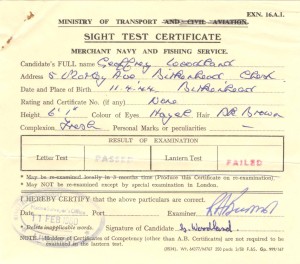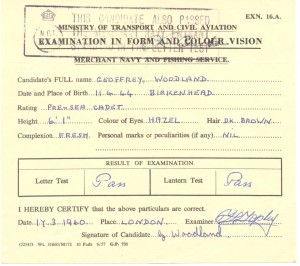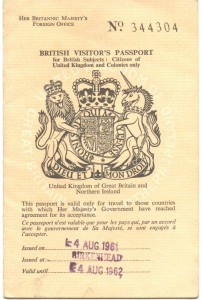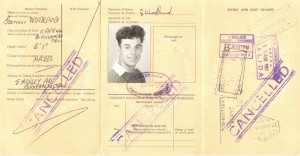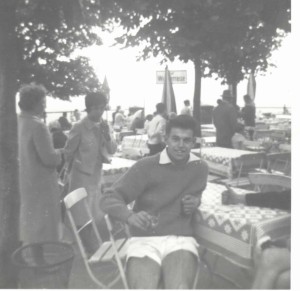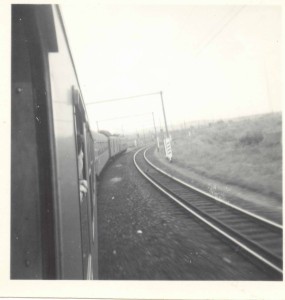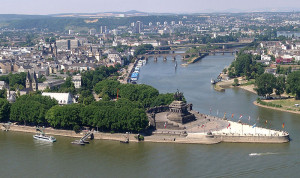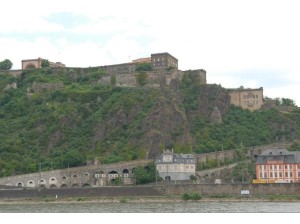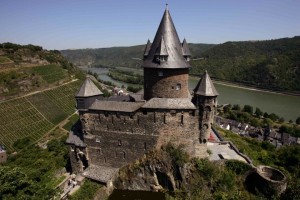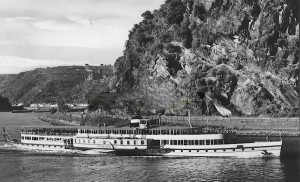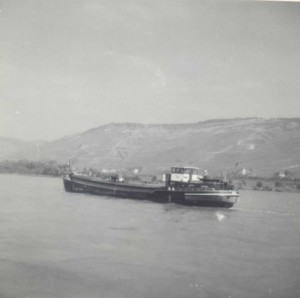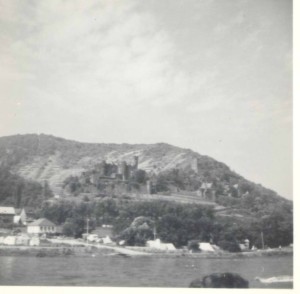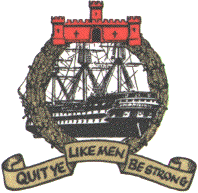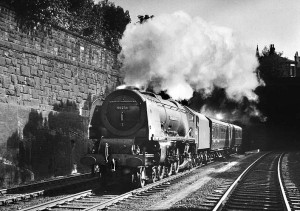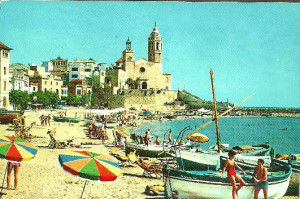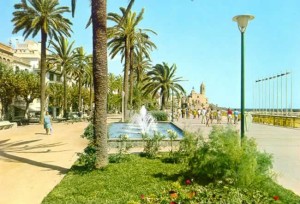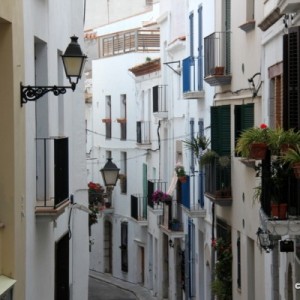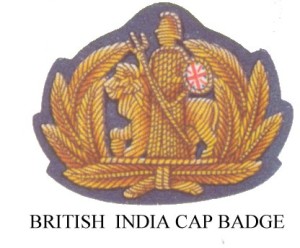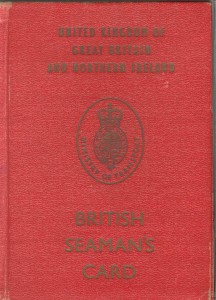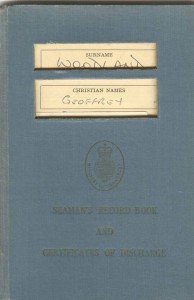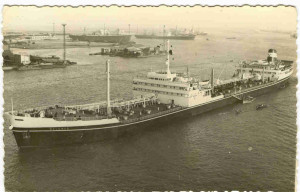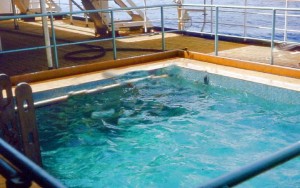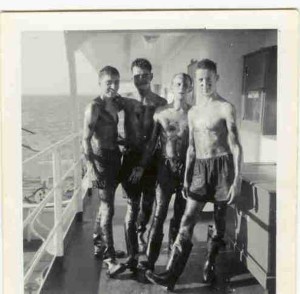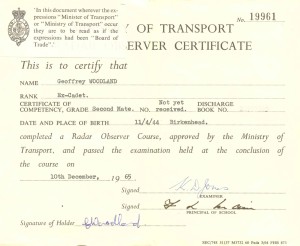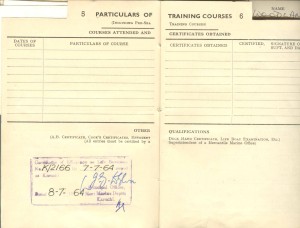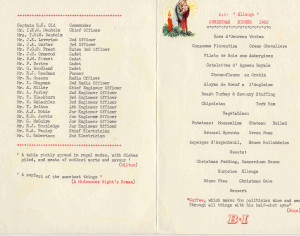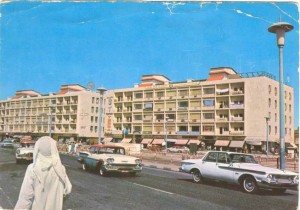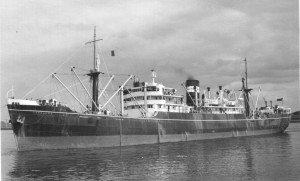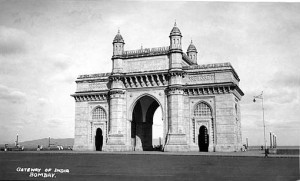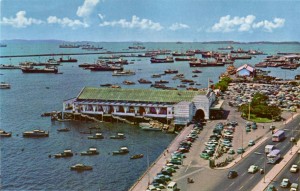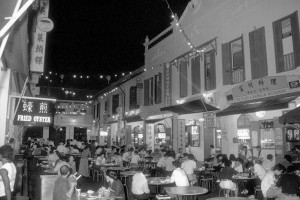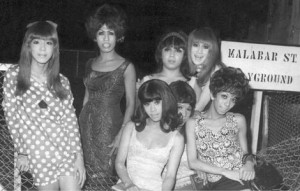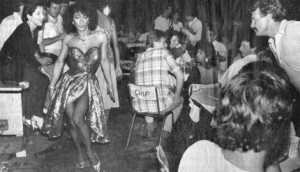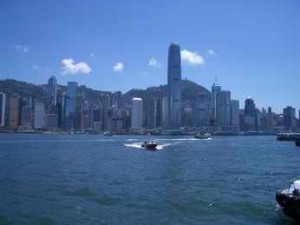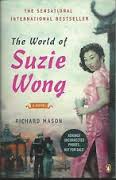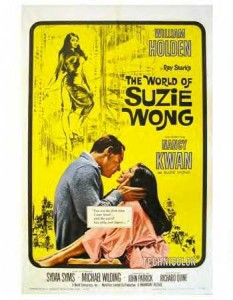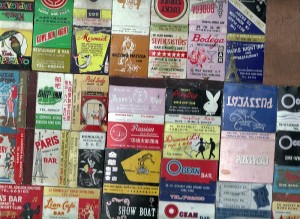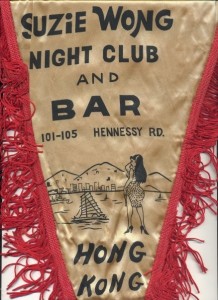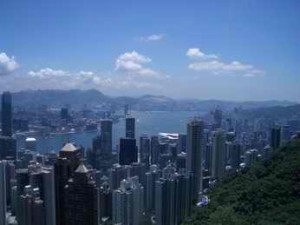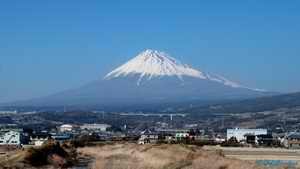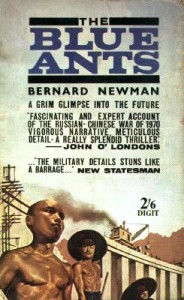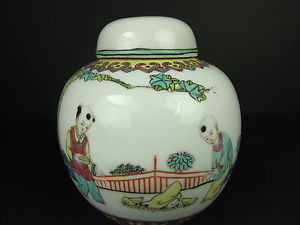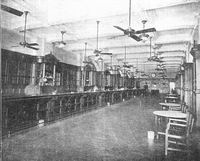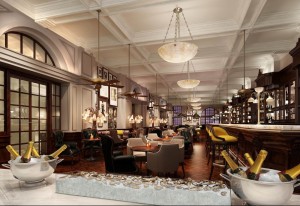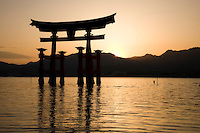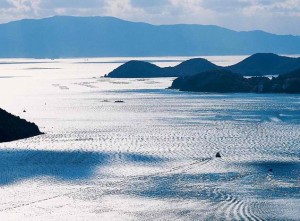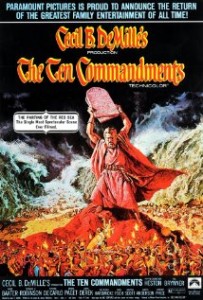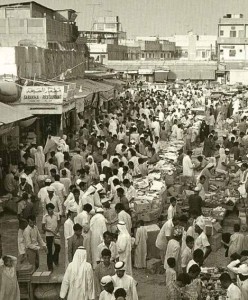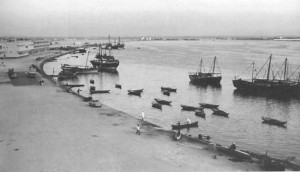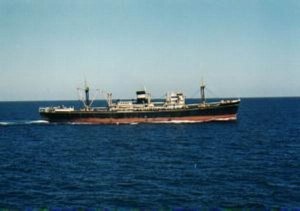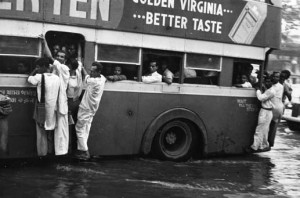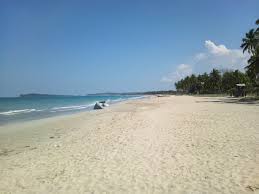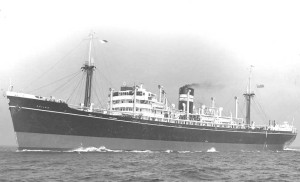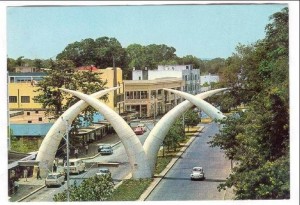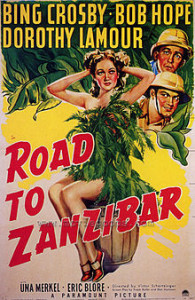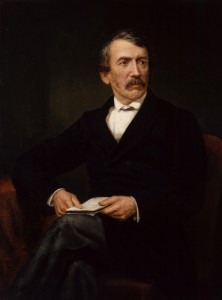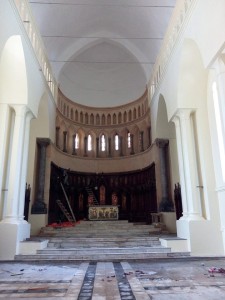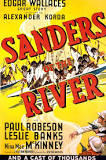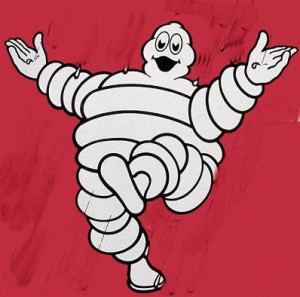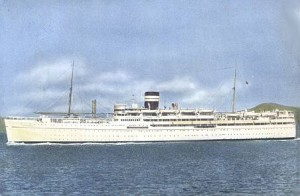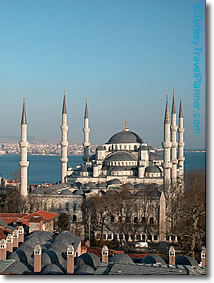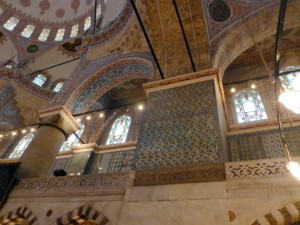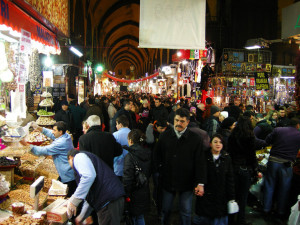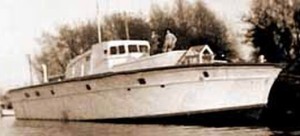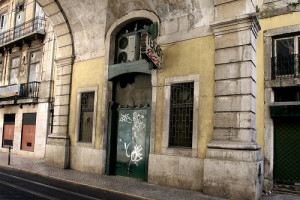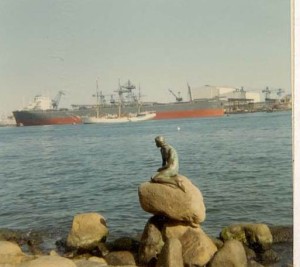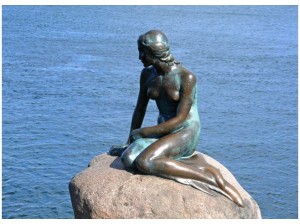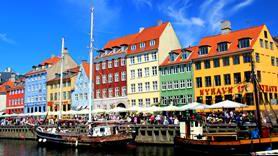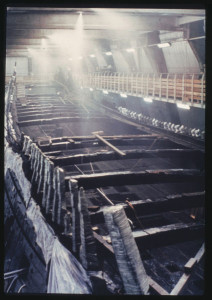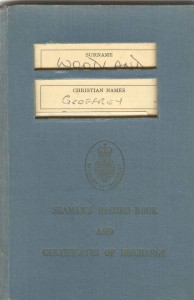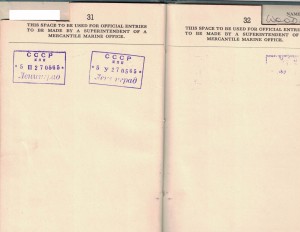I’ll never go abroad 1960 – 1965
Introduction
Do you ever regret making a comment years ago, which proved how stupid and wrong you where when you look back over your life?
I was about thirteen at the time and ‘studying’ French. On the completion of the final examination the class results positioned yours truly second to bottom in a class of forty. I was not very good, nor was I interested in the French language. I can remember the teacher, when discussing my poor effort, asking what would I do if I ever went abroad. The thought of going abroad was so far out of my comfort zone that I remarked that ‘I’ll never go abroad’.
Nearly sixty years later, after visiting more than sixty-five countries, I still feel that I should bury my head in the sand, because of my stupid remark.
1960
During school assembly in March of 1960 the headmaster asked if anyone wished to take an examination to enter a merchant navy officer-training establishment called HMS Conway.
I discussed this opportunity with my parents, because I would have to leave school any way later in the year having reached sixteen. Most of my friends had left the previous year (when they were fifteen) to take up apprenticeships, working in the local shipyard, Port Sunlight soap works or Stork Margarine . None of which attracted me, so I stayed on for another year to gain nationally recognised certificates in various subjects.
My parents agreed that I could attempt the examination, which required a weekend at Plas Newydd (HMS Conway’s facility) on the island of Anglesey, in North Wales. The examination had several written parts as well as an oral examination. I suppose the oral part was to see what I looked like, and if I was aware of world events.
Several weeks after attending Plas Newydd I received a letter of acceptance, and my father received notification that I had won a scholarship, because Conway was a fee-paying school. My parents had to find the money for uniforms and books, but the main fees were part of the scholarship.
I suppose it was ironic that I was about to attend HMS Conway, which was a naval training establishment that used to be a wooden sailing ship moored in the Mersey, but was now a shore establishment in Wales. As a small child I had been told of the ships in the River Mersey, and that small naughty boys would be sent to one of them as a punishment. For the children of Birkenhead at the time, none of us wanted to be sent to one of ‘those’ ships. Now I was going to one as a volunteer.
Before any of this could take place I had to take an eye test at Liverpool, because all merchant navy deck officers had to have 20 / 20 vision and were not allowed to wear glasses. Besides the traditional word chart and the colour chart, to make sure I wasn’t colour blind (a deck officer could not be colour blind) I was given a test in a very dark room, and I was required to spot red, green and white pin pricks of lights as if I was on the bridge of a ship. The positioning of the lights would allow a lookout or officer to know the direction of the other vessel.
I was able to see some of the lights, but not all, so I failed the test.
As I left the testing centre I was given a form that stated that I had failed, but if I wished to challenge this result I could apply to London for a more detailed test at my own expense. If I were successful in the London test, all of my expenses would be reimbursed.
After discussing the failed eyesight test with my father, I borrowed £5.00 from him for the return train ticket to London and the second eye test fee. I passed the London test.
On returning to Liverpool I visited the eye-testing centre to let them know that there was nothing wrong with my eyes. They asked me to take the test again, which I did, and failed again.
At this point someone had the bright idea to switch on the light in the testing room. I had been placed on a wooden box to view a screen, which showed the red, green and white lights. Because of my height (over 6 ft) and being on top of the box this made my eye level to be just beneath a cross-beam (the testing centre being in a basement). In the dark one has a tendency to sway slightly, because you do not have a point of reference on which to focus. The swaying was enough for me to see the lights some of the time, and not be able to see them other times, due to the beam! It made me wonder how many others had been failed, and accepted that they had an eye ‘problem’, and perhaps never went to sea, and ended up in a job that they hated.
At least I collected my £2.00 reimbursement for the second eye test, my train costs and 7/6d for my trouble.
Summer 1960
The first adventure abroad was when I’d just turned sixteen (1960). I’d gained a scholarship to HMS Conway nautical college, and I was due to join this establishment in September.
A family friend (a school teacher) asked me to accompany him in August to help shepherd a group of fourteen to sixteen year old students during a YHA (Youth Hostel Association) trip around Germany. Because I was tall for my age, looked older than my years, and didn’t attend the same school as the other students, the schoolteacher considered me ideal as his ‘offsider’. Of course I didn’t have a passport, but at that time one could obtain a twelve-month passport for a large discount on the ten-year passport. The British were just starting to take European holidays after the financial hardships of the post war 40’s and early 50’s, and YHA was cheap, but cheerful.
The pictures show my second one-year passport
(The first passport was issued for my 1960 holiday)
We travelled by coach from Birkenhead to Dover, which is on the south coast of England, where we boarded a ferry to Ostend, Belgium. The trip from Birkenhead took us hours and hours, even though the new M1 motorway between Birmingham and London had opened the previous year. The one thing I always hated was bus travel – it made me ill, and I was very glad of my Kwells travel tablets. Even the smell of the inside of a bus today brings back bad memories.
Due to the very long journey from Birkenhead to Ostend, the group leader had booked us in to the Zeebrugge youth hostel, which was a short distance along the coast from Ostend. The one thing I do remember about Ostend was a particular coffee bar, which had a jukebox. Jukeboxes were not new to us, but we’d never seen a jukebox linked to a TV screen. For one Belgium franc (well before the EEC and the Euro) we were able to play popular songs and watch the singer on the screen. This is the only memory I have about my first visit to a foreign city.
Zeebrugge was more interesting because it has a strong link to Birkenhead and Merseyside. During WW1 in 1918, the Daffodil and the Iris (both Mersey ferries) took part in the commando raid to sink obsolete ships in the main channel at Zeebrugge, to prevent German vessels leaving port. Although badly damaged, and with many killed and wounded, the two ferryboats managed to return to England, and eventually the Mersey. In honour of their contribution to the raid King George V conferred the pre-fix ‘Royal’ on both ships; they became the ‘Royal Iris’ & the ‘Royal Daffodil’. The second descendant of the ‘Royal Iris’ came in to service in 1951, and it was in 1965, on this ‘Royal Iris’, that I danced with a young girl who would later become my wife.
Our transport around Germany was by rail, which was electric, where as the British system was a mixture of steam and diesel engines. The high-speed trains of Belgium and Germany were exciting to us, but we did miss hanging out of the window and breathing in the unique smell of steam and smoke from the engine. Even so, the German trains had a character of their own, modern, fast and efficient.
It was common for YHA members to walk or cycle from hostel to hostel, but the distances between each of our stops made this mode of transport unacceptable. Our first stop after leaving Belgium was Cologne, which I found to be an interesting place. In 1960 the war had been over only fifteen years so growing up in the UK, at that time, most of the Germany city names were very familiar. One place that we didn’t hear much about, but knew of from school, was Bonn, which at that time was the de facto capital from 1949 to 1990. The old capital, Berlin, was under the control of the four powers, America, Britain, France and Russia.
I found Bonn to be a dull city, and was not sorry to leave the place, via train along the banks of the Rhine to the spa town of Bad Honnef. ‘Taking the waters’ was all the rage, and of course we had to try the water, and from memory I was not all that impressed, because I didn’t know what to expect and the mineral taste was completely different than the tasteless water that came out of the tap at home. On the other hand it was new to me, it was different and it was foreign, so I drank another glass of the famous Bad Honnef water.
Colour film was too expensive for a sixteen year old, but I could still hang out of the window for pictures of our train journey across Germany.
A further short rail trip from Bad Honnef, took us the Koblentz (or Coblenz). The YHA facilities were located in the castle and overlooked the confluence of the Moselle and the Rhine. I was fascinated that I could actually see the two different waters, because they were naturally coloured – the Moselle was green and the Rhine blue, and after they had met they became the normal brownie river colour that we all recognise. I can still remember the view nearly sixty years later.
The Moselle flowing in to the Rhine.
The photograph has been taken from the area of the YHA, around fifty years later. I’m sorry to note the absence of colour in the water.
We enjoyed our stay in Koblentz, the town being ‘old German’ buildings (I don’t remember any modern buildings), cobbled streets, heavy rounded glass shop windows, a real pleasure of a place to just stroll around and absorb the atmosphere. Of course I was too young to drink alcohol, but we made do with ginger beer (it was the same colour as real beer) so we would sit in the sun and watch the young German girls as they promenaded around the main square.
Koblentz YHA (left picture) was inside this castle
Bacharach, further up the Rhine again, was our next stop, and it was quite different from the other towns and villages that we had visited. The YHA was located within Bacharach Castle, which from memory was very different from the Koblentz castle.
I do remember one evening when many of the students were in the Bacharach Great Hall, which was heated by a fire in a huge sandstone pillared grate, when a young man dressed in leather shorts with shoulder straps (braces if you are English, and suspenders if you are American), thick leather climbing boots, and socks folded down around his ankles entered the room dragging a long heavy rope behind him, and shouting for help due to the rope’s weight. I assumed that this person was the YHA manager or was employed by the YHA. A number of us ran over and helped drag the rope in to the hall, where we were instructed to lay it out in a single long length. We were about to take part in an international tug of war!
The tug of war was to be a knock out contest, and was to be in front of the large grate as the flames danced up the chimney. The overhead lighting was dimmed so that the fire illuminated the two teams trying to pull each other over a marker chalked on the wooden floor.
The rope didn’t have the feel of ‘real’ rope; it was very smooth and softer than the rope I would handle later when I was at sea. The British team asked me to be the anchorman due to my size. Using my limited knowledge of knots, taught to me by my father, I tied a Bowline knot to secure myself to the rope. This knot created a loop in the rope, which I put around my chest. Regardless of the weight put on this knot it would not tighten further than the original pressure when it was created, so protecting me from being injured. Thanks Dad!
It was great fun, and because the German members were the greatest number, they had more bodies from which to choose and so won each heat against all other countries. It wasn’t long before the larger boys from different countries agreed to join an international team to compete against the German team. The international team won three out of five ‘pulls’ or should it be ‘tugs’. Perhaps the German team was tired after defeating all the other nations independently, but they couldn’t hold out against a combined international team. Every time I see the film ‘Where Eagles Dare’, with Richard Burton & Clint Eastwood, and the scene where all the main characters are seated around a long table across from a large fire in a medieval fireplace, I think of Bacharach and the tug of war.
From Bacharach we sailed back down the Rhine towards the coast. The name of the paddle steamer vessel was the ‘Bismarck’, and I can remember making the comment that I hoped we didn’t suffer the same fate as the original ‘Bismarck’ in 1941.
What more could a teenager want, but to be aboard a wooden decked river boat with the sound of the steady throb of the engine, the paddle wheels slapping the water as we glided down river, with pale smoke from the vessel’s funnel drifting towards a clear blue sky. All was well with the world as I leaned on the rails and viewed the vineyards, castles, scenic Germanic buildings, which I am sure are still in use today.
Bacharach was our last ‘new’ place before making our way home, via Bonn, Ostend, the ferry and the long bus ride to Merseyside.
River traffic and castles as we sailed down river.
September of 1960, I joined HMS Conway Nautical Training College, so further travel that year came to a stop.
Travel around the UK didn’t stop, because I was picked for the 1st XV rugby team, which entailed travelling to ‘away’ match in London, Pangbourne, Merseyside and many parts of Wales. Would one consider visiting Wales to play rugby, as a ‘visit abroad’ for an Englishman?
We had three terms – autumn was September to Christmas, winter was January to March and summer, April to July, and rugby was played from September to the end of March. I have never reached the level of fitness that I did during my two years at the Conway.
…………………………………………………………………………………………………………………………………………………………………………………………………………..
1961
In 1961 I was invited once again to accompany my friendly schoolmaster for another trip to Europe, but this time it would be southern Spain, staying in a hotel rather than YHA. We’d moved up market.
We used the train service this time from Merseyside to Dover, and had our fill of the smell of steam and blackened smuts suspended in the clouds of smoke from the engine.
A ferry carried us to Calais, in France, where we boarded a coach to take us to Sitges, in Spain.
Our coach crawled through the late evening town traffic until it came to the motorway (freeway) at which point the driver flawed the accelerator and we were truly on our way to sunny Spain.
The excitement of the trip began to fade as evening became night, and the chatter of the students drifted in to sleep. I tried to sleep, but the movement of the coach and the smell of the plastic seating, caused my travel sickness to return.
The occasional whisper as a student pushed another’s head from flopping on their shoulder would interrupt the steady throb of the coach’s engine. Every couple of hours the driver would take a rest by calling his colleague who sat close to him. During the change over process the coach didn’t stop. The current driver would stand gripping the steering wheel, while keeping his foot on the accelerator; his mate would slide in behind him, place his foot on the accelerator, and grab the steering wheel. The first driver would then move away to rest and sleep. It was a sight to see, and very smoothly accomplished so that the speed (about 100 km / hour or 60 mph) didn’t alter. I’m not sure how many of the students watched this change over; perhaps it is just as well that many, if not all, slept through the process. Seat belts were still in the future.
The single deck coach was modern for the 1960’s, but nothing like today’s intercity coaches. The only time we stopped during our road trip to Spain was for toilet breaks. If anyone required a toilet the driver would be warned and the passenger would have to ‘hold on’ until we reached the appropriate place. On stopping everyone was told to leave the coach, even if they didn’t wish to visit the toilet, and walk around the car park area. It seemed a good idea at the time, but then we had the problem of counting everyone back on board in the half-light of petrol stations or a café’s poor outside lighting. Our schoolteacher leader would count everyone at least twice, and then get me to count the students again, once all were on board. The last thing he wanted was to write to a parent and tell them that their daughter was lost somewhere in France.
The total distance from Calais to Sitges is about 1350 kms (865 miles) and from memory it took us around fifteen hours. Although most of the journey had been completed during the night, eventually dawn filtered through the curtains covering the coach’s windows. As it grew lighter more and more curtains were pulled aside and we could see the Mediterranean Sea. A calm, startling blue sea sparkled as a cheer swept the coach from the excited students. The border between France and Spain must be close. The excitement was infectious as we all peered through the left hand side windows. My travel sickness forgotten, Sitges was round the next bend . . . or was it?
It was not until lunchtime that we arrived in Sitges only to be told that the hotel did not have enough rooms for all of us, and they (the hotel) suggested that two ‘guests’ sleep in a small apartment near the hotel. Our leader asked if I, and the other ‘helper’ (a friend of mine) would mind sleeping in the apartment, because he wanted to keep an eye on the younger members of our group, in the hotel. We were quite happy to agree because the whole idea was a new adventure for us.
The apartment was close to the hotel and it was a short walk each morning for us to join the main group for breakfast.
Living ‘out’ did allow us to sample the odd place that we might not have visited if we had been in the hotel. One place we sampled was a room, which along three walls had wooden barrels of alcoholic liquid made from various fruit, from bananas to grapes. The liquid was quite ‘thick’, more like a heavy port than a quaffing liquid. The storekeeper allowed us to sample some of the barrels, in the expected hope that we would buy a bottle or two. Of course at seventeen we were happy to try as many as possible, until the shopkeeper realised that we didn’t have any intention of buying anything. We were asked to leave. The one sample that sticks in my mind was a yellow silky drink that had quite a kick; it was made from bananas. The sampling amounts we were given were not very large, perhaps a tablespoon, but after sampling several we did feel a little off colour.
Sitges is located on the Mediterranean coast of Spain, about thirty-five kilometres south of Barcelona. It was a very pleasant town with a church on a headland that jutted out in to sea. The beach was very clean, and not too crowded. I have no idea what the place looks like today, but I have happy memories of Sitges.
Trips were arranged to various places of interest including a bullfight at Tarragona, sixty-five kilometres south of Sitges. I believe the authorities have renovated the old bullring and now it is used for Castells, or the building of human towers. Also music festivals and sporting events are held there today. I don’t know if it is still used for bullfights. In a way I am glad that I saw the bullfight, because the experience put me off bullfighting for the rest of my life. At the time of my visit to the bullring everything was new and exciting, including the next experience.
While in Sitges it rained heavily one night, the first time in months. The day after the rain my friend and I met a group of semi professional boxers from Liverpool. They had camped in a dry riverbed, and all was well for a few days, until it rained and the river washed away or damaged much of their equipment. They had ridden to Sitges on their motorbikes.
We recognise some of their names, and once they found out that we were from Merseyside (Birkenhead is across the river from Liverpool) they asked a favour of us. They wanted to ‘camp’ in our apartment for a couple of nights while they sorted out their gear and fixed their motorbikes. We had plenty of space and thought that it wouldn’t be a problem, so they moved in to the apartment.
The boxers went out on the first evening and my friend and I had our meal in the hotel with our group of students, and returned to the apartment to go to bed, which was around 10.00 pm. The sun, sand and seawater had tired us out.
The next thing I knew was when a rifle butt struck me in the back. From a deep sleep I was brought suddenly awake and tried to protect myself. A soldier, in a green uniform, was indicating that we should get up and get dressed. We did, very quickly. While getting dressed I could see another soldier looking over the living area balcony in to the street. Before we went to bed we had two potted palms, one each end of the balcony. It appears that our boxer friends had returned from a night out and decided to have a pot plant competition (the pot plants were very heavy) to see how far they could be thrown from the balcony.
This picture illustrates the small balconies and the narrow Sitges streets.
The soldier pushed my friend and I down to the street and motioned for us to pick up a broom each and to start sweeping the street. He had a rifle and I had a broom – I began to sweep the street. The boxers had been ‘corralled’ along a wall by additional armed guards.
It appears that after throwing the potted plants the local neighbours called the police, who, when they arrived met the drunken belligerent ‘boxers’. Not wishing to get in to a fight, the police called the army, (General Franco was still in charge of Spain). Shortly afterwards my friend and I were sweeping the street.
The army tried to get the boxers to start sweeping up their mess, but when a guard pushed one of the boxers, the boxer threw a punch and flattened the guard. That was it!
We were quickly ordered in to a line and surrounded by armed troops and marched off to the local police station. The boxers treated the whole thing as a joke and started to sing ‘Working on a chain gang’ and other prison type songs. My friend and I were not at all happy at being included with our drunken acquaintances.
At the police station I asked to see the British consul, but the Spanish police were not having anything to do with consuls, particularly a British consul. At that time the Spanish government was demanding that the British return Gibraltar to Spain, so the police were quite happy to lock us all in a small cell below street level. The cell was square shaped with three solid concrete walls, the outer wall having bars high up over a small window, where we could just see the pavement if we held on to the bars and pulled ourselves up to check the street outside. The fourth wall was a wall of iron bars, which also contained the door. The cell was not large enough for us all to sit down (nothing to sit on anyway) and the toilet was a hole in the corner of the cell on the outside wall, without the usual cistern, pan and seat.
The two side concrete walls had graffiti scrawled across them, and some Spanish words, which I couldn’t understand. It was a depressing place and it smelled of urine and other waste products. We organised ourselves to be as far away from the toilet area as possible. My friend and I were left in the corner near the meeting of the iron barred door and the concrete wall.
The boxers kept singing, for what seemed hours, until they eventually stopped as they slowly sobered, and realised where they were.
On the floor we used a large oblong piece of bread as a football, and tapped it from one to another. Not that we could kick it far, considering the smallness of the cell, but it did help to pass the time. As time passed I tried to sleep standing up and then I tried as I squatted down, but this brought too much pressure on my knees forcing me to stand again.
The grey light of dawn brought some relief, because in the cell block there was only one small light bulb that glowed by the main door into the underground cell area. Perhaps we could make someone understand our need for the British Consol in daylight.
As daylight strengthened the outer door of the cell block was unlocked and a guard entered. We asked for food and something to drink. The guard pointed to our ‘football’ and bent down to turn on a water tap over the toilet. Leaning over the toilet we were just able to catch a single handful of water. The other hand we used to balance ourselves away from the open toilet hole. The cold water was welcome, but I was concerned that it might not be normal drinking water so most of mine went on washing my face to try and get rid of the tiredness.
The now sober boxers, asked to see the officer in charge, and when the policeman, who spoke English, arrived, they spoke up and told him that we had nothing to do with the damage. It was obvious that my friend and I were much younger than the boxers, and after a few minutes the officer opened the cell door and let the two of us out. He relocked the door just in case the boxers thought of escape.
We were taken upstairs and told to stand in front of the officer’s desk. He then lectured us and told us to behave while in Sitges, and that he didn’t wish to see us again. We quickly agreed with everything he said, although later I considered that we were only guilty by association, and innocent of any wrongdoing, unless helping fellow British travellers was a crime. At the time we would have agreed to anything just to get out of that stinking cell.
We were able to get back to our apartment for hot showers and a change of clothes, before making our way to the hotel for breakfast. We acted as if everything was normal, even though we did yawn a lot. I didn’t tell our leader because I didn’t wish to add to his worries, nor did I want our adventure to get back to our families.
It must have been ten or fifteen years later that I told my mother the details and I still have my doubts that she believed me.
The rest of our time in Spain was sightseeing local places of interest, sun bathing on Sitges beach and eating. All holidays come to an end and it was another fast drive to Calais, ferry to Dover, and the train home with a great suntan and the experience of being a gaolbird.
The Spanish holiday was my last overseas trip for over a year, because I knew that I had final examinations before leaving HMS Conway in 1962 and the results of this examination would determine the shipping company that I’d join – if any shipping company would have me.
……………………………………………………………………………………………………………………………………………………………………………………………………………………………
1962
In mid 1962, after two years at HMS Conway, I graduated with a First Class leaving certificate. British India Steam Navigation Company, also known as simply BI, accepted me in August, as an indentured cadet (apprentice).
Once I’d been accepted I applied for a British Seaman’s Card and a Discharge Book.
I had the paperwork to prove that I was a sailor, but I’d never been to sea.
In mid September I was order to join a tanker, the Ellenga, on the 12th October, in the River Fal, which was moored just off the town of Falmouth. The vessel had been in dry dock and was about to sail for the Persian Gulf for a cargo of oil. For someone who didn’t have any intention of going abroad I was doing a lousy job of staying in England.
On joining I became one of four cadets, and the other first trip cadet turned out to have been in my class at HMS Conway! Seeing each other helped us to fit in to our new life. Each cadet had his own cabin, and we all shared a Goanese steward who looked after our requirements. I didn’t have any idea before I joined that a lowly cadet would be entitled to the services of a steward!
Later I realised how lucky I was to join BISNC. A Scotsman, William Mackinnon in 1856, had created the Company, and he set certain standards for the benefit of the officers and crew; conversely he expected a high standard of service from his employees. BISNC. was a proud company and highly regarded by both officers and crew. Many of the crew had spent their whole life in the service of the Company, and they considered it a great honour to be in the Company’s employ.
We sailed early afternoon, and as a first trip cadet I was ordered to the bridge and told to watch and observe and not to get under anybody’s feet. This gave me the opportunity to see the British coastline sink lower and lower in to the silver-grey sea, while on our port side the haze of the French coast could just be seen on the horizon. Eventually, both the British and French coast disappeared, leaving us all alone in the Atlantic Ocean heading for the gateway to the Mediterranean, Gibraltar, and then on to the Suez Canal.
I was on the Ellenga for about nine months and all of the cadets worked alongside the crew, because hopefully one day we would be watch-keeping officers and we would be expected to know how many men would be required to do a certain job, and how long is would take.
In addition we were expected to learn Hindi, because that was the language that the crew understood. Many of the crew spoke some English, because they had worked for the Company all of their working lives, but as an officer one was expected to speak Hindi. I still have my Malim Sahib’s Hindustani a book, which includes all nautical terms and words in common use both ashore and afloat, quoted from the front cover. (Malim Sahib = Ship’s officer). I only wish I’d spent more time reading this book.
When I left home my father warned me about being sent for a ‘long weight’ or a ‘bucket full of steam’, so I was well aware of the tricks played by older hands.
One day I was told by the First Officer to get the Cassab from the forecastle store. Remembering Dad’s warning I made my way to the store and lay down on a coil of rope to have a doze. I figured I’d report back in about twenty minutes.
I dozed for a few minutes when suddenly the daylight from the doorway was blocked, and I rolled over to see why. It was the First Officer, and he was not at all happy with this first tripper. It was then that I was told in no uncertain terms that Cassab was Hindi for storekeeper, not some fictional item to take the mick out of first trippers..
My life at a first trip cadet became a mixture of boredom and extreme interest. We were expected to learn the layout of all the deck pipes that carried the cargo oil, including the cross over values to switch oil from one tank to another and the position of the firefighting equipment.
On the other hand we had to take part in chipping paint off the rusted areas of the deck and bulkheads using a small hand held bronze hammer. We used bronze hammers because they were made from non-ferrous metal and would not cause a spark. A spark on a tanker was the last thing anybody wanted, because it could ignite the gas that seeped on to the deck from the crude oil. We used to receive regular warnings of tankers in distress due to gas igniting. I don’t remember ever reading that the damaged vessel survived, the report usually reported that the tanker had blown up due to gas ignition. The reports made comforting reading for those of us chipping away.
Once the bare metal had been exposed we would paint it with red lead paint (in today’s world, H&S would have a fit). After the red lead had dried, we used grey undercoat followed by the white topcoat. A 30,000 ton ship has a lot of metal to chip by hand. Many of the later ships in which I sailed, the cadets and crew used an electric chipper that had several heads spinning at high speed, so making it easier to clean a large area quickly, but those vessel were not covered in gas.
The bane of using the non-ferrous hammer was that it quickly became blunt and required more force to belt the rust away so as to expose the metal deck. It was hot sweaty work in a Persian Gulf summer.
In our free time we studied, via correspondence courses, for our examinations to become deck officers.
The Ellenga took me to some strange places. Our first port of call was Port Said as we transited the Suez Canal. We didn’t stay long in Port Said, just a few hours while the authorities created a convoy to transit the canal. The canal is only wide enough for vessels to go one way, so a group vessel would travel southbound to the Bitter Lakes, or a ‘cutting’ where the southbound convoy can stop and allow the northbound convoy to pass. While transiting the canal local ‘bum’ boats came along side, and those that had the company contract would hitch a ride through the canal; so that when we reached the ‘cutting’ they would carry our mooring lines ashore to bollards. If we passed the cutting we would anchor in the Bitter Lakes. Before the canal was built there were salt valleys in the area, which became flooded after the canal was opened; hence the name of Bitter Lakes.
Mixed with the crew of the ‘bum’ boats we often had trinket sellers and entertainers. The sellers sold souvenirs, mainly to passengers on passenger ships, rather than the crew of tankers. Regardless, once we knew these entertainers / sellers would be aboard we locked everything down – cabin doors, windows, doors to the accommodation and any loose pieces of equipment belonging to the ship. We never locked our cabins at sea, but we did when ‘strangers’ where on board.
During my first trip through the Canal I was introduced to the Gully Gully man, who was an outstanding conjurer. On the main tank deck he had an endless supply of day old chicks, and he could make them appear and disappear, and we (cadets) were only a few feet away from him. We couldn’t see how his tricks were done. He made the chicks appear out of thin air or our shirt pockets; he was very good and would have been top act for a TV show. We paid him as one would pay a street entertainer and when he had covered all of the officers and crew, and considered that he had made enough for the day, he shinned over the side and dropped in to a small riverboat that was following us.
Once we crossed in to the tropics the small swimming pool that we had on the tanker came in to its own. It was the cadets’ job to pump out the water each day around 6.30 to 7.00 am and refill with fresh seawater. Many times we noticed flying fish in the pool; they had ‘flown’ in during the night, perhaps attracted by the deck lights. We would catch the fish as the pool’s water level dropped and keep them in a bucket of sea water. Once we had them all we would present them to either the deck crew or the Chinese ‘Johns’. The Chinese ‘Johns’ where Hong Kong Chinese (Cantonese was their language) and they were either engine room fitters or the carpenter. We cadets had more to do with the carpenter than the engine room fitters.
I don’t know why the Chinese crew members were called ‘Johns’, but perhaps it was due to the first Chinese person to take our British nationality in 1805, was called John Anthony.
Kuwait is an oil rich kingdom that has its main city named after the country, but we were not to berth at the main city of Kuwait, but Mina Al Ahmadi the oil port a few miles outside the city. At that time they were separate towns, but I think that Kuwait city has expanded so much as to combine Mina as an outer suburb of Kuwait today. Once along side (an oil jetty) we were told that we were not allowed outside of the refinery, and that the perimeters was guarded by armed guards, and a metal fence with barbed wire on the top. Loading 30,000 tons of oil would not take long; perhaps twelve to fifteen hours and the cadets had the job of supervising the loading under the officer of the day. If we had time we would be allowed to visit the ‘canteen’ within the confines of the refinery. This canteen was a corrugated metal building and was restricted to foreign crews only.
Since joining the tanker I’d learned how to smoke and drink beer (I was a fast learner). The cost of a carton of two hundred cigarettes on the ship was eleven shilling and four pence (tax free of course) BUT the cost of the same carton of cigarettes in the Mina ‘canteen’ was seven shillings and six pence, a huge saving considering that I was paid four pound two shilling and six pence a week, for an eight four hour week – we were not paid overtime.
To say that the purser was upset when we returned to the ship with a number of cartons of cigarettes would be an understatement.
The cost of a bottle of gin on the ship was about eleven shillings, and in the Mina canteen it was seven shilling. Fortunately for the purser, I didn’t like gin.
Inside the canteen it was all plastic chairs and Formica tabletops, everything was utilitarian, because nobody expected sailors to have any taste or finesse. I suppose we didn’t do our selves any favours because most evenings there were fights between different nationalities. Some would say that this was the only way tanker men could let off steam. They were not allowed in to the city, they would not see their wives or girlfriends for months on end and every port they visited was miles away from the population due to the risk of explosion or fire from the cargo that they carried.
When a tanker man could no longer stand the smell of crude oil, or handle the working conditions, he would leave, and his mates would say he had ‘tankeritous’ as if it was a disease.
From my position as a first tripper, I accept that we worked for long hours and didn’t get Sunday off. It was the life style of being at sea at that time. For years after leaving the sea, if I suffered from a heavy cough I could taste the crude oil. Heaven knows what it has done to my lungs.
From Mina we sailed for five days to Little Aden, which was across the bay from Aden, in what today is known as the Yemen. In 1962 Aden and the surrounding area was still under British control. The Crater District of Aden town is situated in a crater of an ancient volcano. This area was the main business area and to walk around for a spot of sight seeing was exhausting in the heat. I doubt that Aden will ever become a ‘must see’ place on anyone’s bucket list. My visit to Aden town was some months in the future when we anchored off Aden to change deck crews and boiler clean. Once again we ‘tankermen’ could not leave the refinery area of Little Aden.
After discharging our cargo it was five days sailing back to Mina during which time we cadets had the unenviable task of supervising the cleaning of all the used tanks – tank cleaning, what a joy, six hours on, six hours off, day after day.
I am second from the left – Health & Safety, what’s that when tank cleaning in 1962. To be fair we were supposed to wear breathing apparatus when we were fifty feet (15.5 mtrs) down a crude oil tank, but it was virtually impossible to climb down the vertical ladders while wearing the equipment, and to work when at the bottom. In the heat of the Persian Gulf we wore as little as possible. We didn’t work down the tank for too long, because the fumes would make one light headed (similar feeling as if one was a little drunk) and ones judgment could be affected and we still had to climb the fifty-foot vertical ladder to the surface.
There was one tradition that we all enjoyed on a daily basis, which was the consumption of fresh lime juice at 11.00 am. This tradition was an obvious a throwback to the avoidance of scurvy when at sea, due to the use of salt as a preservative before refrigeration. It was because of this use of lime juice, during sailing ship days, that American sailors nick named British sailors ‘Limeys.’
In addition to being a welcome break from work, it also quenched ones thirst. The odd thing about this tradition was that we used the lime juice to help us consume two large salt tablets! We had to be careful that we replaced the salt lost due to excessive sweating when tank cleaning. Ironic that we used yesterday’s preventative solution to help us prevent a related problem two hundred years later.
In addition to tank cleaning we were expected to keep up with our studies, via a correspondence course, for the examination for a 2nd Mates ‘ticket’. Certain certificates were required before we would be allowed to sit the examination in the UK, and this included the ability to steer an ocean going vessel correctly.
The Captain soon had me practising my helmsmen skills. During my time at HMS Conway we were expected to gain the ability to handle small boats, which included powerboats, rowing cutters, which had twelve oarsmen, or gigs with six oarsmen, as well as small sailing boats.
After a time one gained the ‘feel’ of what ever craft that you were steering, and a 30,000 gt tanker was no exception, it just took a little longer to alter course, which is an understatement.
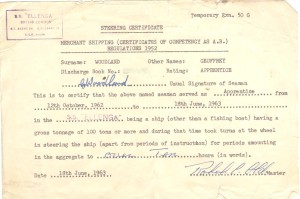 While at the helm if the wake of the vessel was not arrow strait the Captain would make him self heard – he didn’t like a zig zag course, because it used too much fuel, and he maintained that because we were no longer a target for submarines, zig zagging was for cowboys.
While at the helm if the wake of the vessel was not arrow strait the Captain would make him self heard – he didn’t like a zig zag course, because it used too much fuel, and he maintained that because we were no longer a target for submarines, zig zagging was for cowboys.
Other certificates that were required before sitting the examination consisted of a Lifeboat man’s certificate, RADAR operator certificate and St John’s Ambulance First Aid Certificate. If a British vessel had ‘less than ninety nine souls on board’ the vessel was not required to carry a doctor, hence the first aid certificate. Of course we had a book called the ‘The Ship Captain’s Medical Guide’ – I still have mine published in 1946, Ministry of War Transport – cost was 3/6d. It has plenty of black and white sketches and photographs to help us remove foreign bodies from eyes, or people.
RADAR certificate Lifeboat ticket stamped in my Discharge book
The round trip from Mina to Little Aden, and back again to Mina, was called the Mina / Aden ferry – five days down to Aden and five days up to Mina (tank cleaning). Is it any wonder people ended up with Tankeritous?
On the 21st December 1962 we loaded once again at Mina, for Little Aden. Christmas Day was celebrated in the Persian Gulf, as we sailed through the Straits of Homuz. The cadets were given a day off, with a very slack day for Boxing Day.
The menu for our Christmas evening meal whilst at sea.
We were off Little Aden wharf at 2.00 am, 27th December and sailed at 4.00 pm the following day. Our departure time from Little Aden allowed us to celebrate New Year Eve and the first day of 1963, at sea, in the Persian Gulf.
…………………………………………………………………………………………………………………………………………………………………………………………………………………………….
1963
After loading in Mina the Company took pity on us and we were ordered to Philadelphia; to be exact the oil terminal at Marcus Hook, on the Delaware River. We didn’t care where our destination was, as long as it wasn’t Little Aden!
The voyage was twenty-eight days, out of the Persian Gulf in to the Arabian Sea, the Red Sea, through the Suez Canal, and across the Mediterranean, followed by the Atlantic in mid-winter. The winter of 62/63 was the coldest winter in the UK since 1947. In the Atlantic we had to put up with storms, and mountainous seas that smashed in to the ship and twisted metal ladders, while the wind carried away ridged awnings that were bolted to the ship. All galley fires were extinguished and we lived off corned beef sandwiches and hard-boiled eggs for days. Nobody was allowed on deck because of the wind and waves. I’d read about huge Atlantic waves, but being on a 37,000-dwt ship, and being tossed about as if we were a toy boat in a child’s bath, is something else.
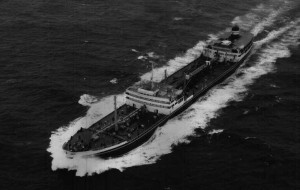 The first morning of the storm two of us, in our ignorance, donned oilskins and sea boots (wellingtons), and made our way gingerly along the catwalk. We were going to check on the water in the small swimming pool, which was down aft. The pool cannot be seen in the photo, because the pool was on the starboard side of the aft accommodation.
The first morning of the storm two of us, in our ignorance, donned oilskins and sea boots (wellingtons), and made our way gingerly along the catwalk. We were going to check on the water in the small swimming pool, which was down aft. The pool cannot be seen in the photo, because the pool was on the starboard side of the aft accommodation.
The catwalk is a suspended walkway to allow people to get from the midsection of the ship (officers’ accommodation and bridge area) to the aft area, without climbing over the deck pipes. Most tankers have a catwalk, which are several feet above the deck piping. Along the catwalk are shelters, also known as bus stops, to protect the walkers during bad weather. The idea being to dodge, from bus stop to bus stop, as you moved aft.
The above photograph shows the Ellenga, and the two bus stops aft of the centre accommodation can be seen – they are the two white objects on the deck.
This particular day, once we were outside, we realised how bad the weather had become, but we still stupidly started our dash from the accommodation to the first bus stop. On reaching this shelter a large wave hit us, and green water rolled over the deck covering everything in sight, including the catwalk. We hung on as water poured around and entered the bus stop high enough to fill our sea boots. The ship rolled again, and the water flowed from the bus stop leaving us gripping the safety rail for dear life, and trying to walk quickly back to the accommodation before the next wave hit. Trying to run on a moving deck with you sea boots full of water, is very uncomfortable, and slow. We managed to reach the main door of the air lock just as the next wave started its run across the deck. It took the strength of the two of us to pull open the main door against the power of the wind, and the roll of the ship.
The airlock was a system that would not allow the outer door of the accommodation, and the inner door in to the living area, to be open at the same time. We were allowed to smoke inside the accommodation, so of course we were very careful not to allow fumes or gas from the cargo of oil in to the accommodation. The matches that we used to light our cigarettes were ‘safety’ matches, and normal matches and lighters were forbidden.
The first mate was not at all happy when he found us squelching our way to our cabins. I don’t know if it was due to our stupidity, or because we were wetting the carpet along the corridor.
Eventually we made it to the mouth of the Delaware River and picked up a pilot. I was on the bridge keeping the logbook up to date – every thing that happened was recorded in writing – pilot aboard, pilot on the bridge, when he gave his first order it was Pilot’s advise, Captain’s orders. The Captain was still in command even when the pilot was on the bridge.
I did not record the first comment from the Pilot to the bridge personnel as he walked through the door.
Although we had been at sea for twenty-eight days we managed to keep up with world affairs, particularly those concerning the UK. Harold Macmillan, the British Prime Minister, had his hands full dealing with John Profumo, the Secretary of State for War, the Soviet Naval Attaché at the Russian embassy, and a young woman named Christine Keeler, who was supposed to have been sleeping with the Secretary of War, and the Soviet Naval Attaché, at the same time!
The American pilot threw out the following to those of us on the bridge –
‘What are Christine Keeler’s favourite newspapers?’
Of course none of us knew the answer, but the pilot did –
‘She takes a Mail, a Mirror, a couple of Observers, and as many Times as she can get.’
This caused all the British to burst out laughing, but the helmsman, who was Indian, looked at us as if we were completely mad. He was not aware that the Mail, Mirror, Observer & Times were all British newspapers.
The weather, during our crossing of the Atlantic, was so cold that it was causing the oil to turn to a glutenous mass.
As cadets, it was our job (weather permitting) to lower a thermometer with a cup on the end, which filled with oil and registered the oil’s temperature. If the oil became too cold it would be very difficult to pump ashore. The temperature was recorded and the engineers informed. The engineers would then heat the oil to keep it in a liquid state. At times it was so cold on deck that as we pulled the thermometer up we could see the temperature of the oil, in the small reservoir, falling.
We worked in pairs, and it was difficult to move around due to the layers of clothing and the thick socks and sea boots that we wore, in an effort to keep from freezing. The tanker had thirty-three tanks, of which six were always kept ‘clean’ for salt-water ballast to be used after discharging the oil. Sounding the remaining twenty-seven, in the temperate climate of the Mediterranean took just over an hour. In the cold of the North Atlantic it went on for much longer.
Fortunately the ship’s engineers managed to heat the oil to the correct temperature, and once alongside at Marcus Hook on the Delaware, we started discharging; while the river began to freeze, and lock us alongside.
I managed to get some time off and went by train to Philadelphia. It was extremely cold, which took the edge of any idea of sightseeing. I did buy an original Tommy Dorsey LP for $1, which I still have (music transferred to the computer and cleaned of the original scratches), and also a black fur hat, which came in handy some years later in Leningrad (now called St Petersburg).
Our next move, after breaking out of the ice in the river, was to Maracaibo in Venezuela, for a cargo of oil for the UK. At least it would be warm in Venezuela!
During the voyage we were followed and watched by the US navy, because the Cuba crisis had not long been resolved (about ten weeks earlier) and the US & Russia were still a little ‘nervous’. Nothing untoward happened and we were able to load our cargo in Venezuela and sail for home.
Every time we sailed for a European port we sailed for Lefo – I tried to find this destination on the chart, and in an atlas, but failed. I eventually found out that Lefo is fictional point just off the south coast of England – Land’s End For Orders! Our cargo may have been on sold to another destination.
Having crossed the Atlantic again and having our destination confirmed at LEFO, we entered the English Channel, which was wrapped in thick fog. There is nothing so haunting as the sound of ships’ foghorns to warn other vessel of your closeness. The problem is that sound bounces around in fog and the vessel may not be where you expect it to be. Fortunately my own ship, being only a couple of years old, had radar so we were able to ‘see’ our way up the channel. Even so we were only moving at a very slow speed. According to international sea law, the speed should be such that you can stop in half the distance that you can see.
We arrived safely at the Isle of Grain oil depot at the mouth of the River Thames. A fast discharge and by mid April, we were back in the Persian Gulf at a new loading port called Banda Mashur in Iran, (Some times known as Bandar-e Mah Shahr), where we managed to load at a rate of 4200 tons an hour. We didn’t wish to hang around, and I think this was fastest hourly rate that we recorded.
Some of the other fun places we visited – Das Island, which is a hundred miles (160 km) off the coast of Abu Dhabi; the size of the island is three quarters of a mile by one and a half miles, and is famous as a landing spot for migrating birds and a place for sea turtles to breed. Not a particularly sexy place to visit, but apparently the turtles liked this place as a holiday island.
Ras al Khaimah was another hot spot. Funny, but Ras al Khaimah means ‘top of the tent’; which is the last place I’d think of if I wanted to go camping.
A fast loading and this time we were off to Wilhelmshaven in Germany, via of course LEFO.
In the next few months we focused on Mina; the corrugated canteen, with its joy of the reason for travel, and visits to Little Aden, but all good things come to end and we finally returned to the Isle of Grain where I paid off the tanker, after nearly nine months, and went home to Birkenhead in June 1963.
I was given eight weeks leave, but after two weeks I was bored. The boredom was my fault because I’d changed. I’d seen some of the world, experienced storms, picked up enough Hindi words to make myself understood to our Indian crew, and could now steer an ocean going vessel. I was even beginning to miss the Mina / Aden ferry I was in a bad way.
My friends back home hadn’t changed. They spoke of last night’s TV, football at the weekend, and they looked forward to their annual holiday.
There was nothing wrong with their life, but it wasn’t for me, after all, I doubted that I would have any reason to go ‘abroad,’ didn’t I say that at school?
The thought of another six weeks of boredom was too much, so I rang the Company and asked for a ship.
The Company obliged, and sent me an airline ticket for Kuwait!
I left Heathrow on a Comet 4 for Rome, next stop should have been Damascus, but we were diverted to Beirut, and finally Kuwait. On landing I was met in the arrival hall by a representative of the shipping agent and within minutes I had my bag and was through customs and immigration, while many other passengers were still queuing. Outside I was escorted to a very large American car; the driver opened the rear door and indicated that I should sit in the back. The agent shook my hand and wished me a safe journey, which at the time I thought was a strange comment. After all we were only going to a city hotel. The driver smiled at me, via the rear view mirror, and put his foot down on the accelerator. Now I understood the agent’s comment, within minutes we were travelling at over one hundred miles an hour along a freeway to the city. At that time nobody wore seatbelts. I just hung on to the roof strap. Thirty minutes later we pulled up at the Bristol Hotel in a cloud of dust and sand. I was to wait in this hotel until my ship arrived in to Kuwait.
I sent this post card to my parents to let them know that I’d arrived safely. At that time we did not have a phone at home, and e-mail was thirty-five years in the future.
It was mid July and I only ventured out of the hotel in the early morning or late afternoon – it was the height of summer and it was HOT & dusty. The hotel was ‘dry’ i.e they were not allowed to sell alcohol, so one couldn’t have a cold beer in the cool of the evening.
I received a phone call at 4.00 am, and I thought it was the agent telling me that my new ship had arrive – wrong number. I received another at 10.00 am and this time it was the agent to let me know that I would be collected and taken to my new ship in the early afternoon, the Landuara.
What a difference between this vessel and the tanker. The tanker was just over two years old, and my latest posting was to a vessel that had been launched in 1946, two years after I had been born. Her deadweight was 7200 tons. She didn’t have any air-conditioning, cadets slept two to a cabin, and the cabins were not at all large, in fact the shared cabin was smaller than the single cabins on the tanker.
Our first port of call, after leaving Kuwait, was Basra, about 60 miles up the Shatt al Arab. Many people refer to it as the Shatt al Arab River, but the Arabic meaning is Stream or River of the Arabs, so by putting river at the end we have Stream or River of the Arabs River, which is a bit of a mouthful.
The river itself denotes the border between Iraq and Iran, and it is the confluence of the Tigris and Euphrates. Basra is about as far upriver as a sea going vessel can reach from the Persian Gulf.
The river flowed through miles and miles of Iraqi and Iranian desert. Khaki was the colour of the day, in fact every day. Sand storms, along with the heat and the flies made this area of the world one of the most unattractive. From memory the only green things I ever saw were the leaves of palms, and the lawn of the British Club, which was not the lush green of England, but a pale green / yellow effort that stood little chance of ever turning a lush green in the searing heat of August. The Shatt al Arab water was a dirty brown combination of local sewers, run off from the surrounding land after oxen had walked in circles to drive water from the river to irrigate the riverbank area, and the occasional shower of rain. It was unthinkable for any of us to wish to swim in such water, walk on it perhaps, but never in it to swim.
I did hear once that where the Tigris and the Euphrates meet, is where the Garden of Eden is supposed to have been located. Things have changed in the area since Adam and Eve left the garden.
By now it was August the hottest time of the Iraq summer and temperatures during the day were well over the 40 c (106F) mark and when working in the holds of the ship, the temperatures were higher again. At night I used to obtain two very large bath towels, soak them in a bath of fresh water, and put one on the deck of the highest part of the ship, and pull the other over me in an effort to get some sleep before either towel dried out. Sleeping in the cabin was impossible, because of the lack of air conditioning. We did have a small fan, but all that did was move the hot air from over there, to over here, without generating any cooling.
When I was in my fifties I suffered from rheumatism in certain weather conditions and I blame the use of the soaking wet towels as the cause – but without the wet towels we wouldn’t be able to get any sleep. Imagine the conditions for our engineers when they were on duty in the engine room.
At the end of the workday (we were alongside, not moored in the river) we did have the chance to visit the British Club, where we could buy English beer. The members allowed us to use their swimming pool, and they were very kind and friendly to us poor cadets making us ‘honorary’ members. The other advantage of the British Club was that a number of the members had their daughters visiting during the British school holidays (late July to early September), and some of the daughters were my age. . . . . but we were not going to step out of line and cause any problems, after all the Club had been very kind to us, and they sold cold beer.
On the evenings that we didn’t go ashore, we would sit outside our accommodation on the riverside of the ship, not the shore side, and eat watermelon, and hold pip-spiting contests across the river – we never reached the other side. The melons were obtained via barter. Wood in Iraq was expensive and difficult to obtain. Our ship used wood as dunnage when stowing cargo during loading cargo (well before containerisation), because it was inexpensive or a waste material from another process. After we had unloaded cargo we would always have plenty of dunnage left over, and we either dumped it at sea (forty years before the PC brigade were invented), or reuse some of the dunnage for the next time we loaded cargo. Our old dunnage had value to the local Arabs, so we would swap some for huge watermelons that grew along the banks – we were happy and the local Iraqi boatmen were happy.
After completing our unloading and the loading of export cargo (dates), we dropped down the river to Khoramshah, which is on the Iranian river bank, so we had to remember to refer to the Shatt al Arab as the Arvand Rud (Swift river), which is the Persian (Iranian) name for the river. Instead of watermelon pips we swapped dunnage for pistachio nuts; we didn’t spit, but flicked the shells across the water. Iran, being the largest producer of this nut ensured we had a regular supply.
Finally we were free of the river, and out in to the Persian Gulf. If we visited an Arab port it was the Arabian Gulf never the Persian Gulf, but we didn’t care as the movement of the ship created its own breeze, however hot, and Bombay in India was our next port of call.
Gateway to India (from a post card)
I liked Bombay with its teaming millions, garri wallhas (motorised rickshaw now commonly called tuk tuks), honking horns, the ringing of bicycle bells, and the ever mouth watering smell of spiced food.
I’d grown to love curries, because at lunchtime on the Company’s vessels, the officers would be offered curry (as well as European food). The curries were different every day, from beef through to fish or vegetables. We had two galleys on the ship (sometimes more if we had Muslim & Hindu crews), one for the European officers and the other for the crew. The deck crew might have all been hired from one village in India or Pakistan, and the engine room crew from another village. The cooks and stewards for the Europeans were Goanese, which was a colony of Portugal until 1961. The Indian cooks might have been Muslim or Hindu, which meant that the officers would not be able to eat their bacon (Muslims will not touch pig meat) and eggs, or their roast beef (Hindu will not touch cow meat), so the solution was to hire people from Goa to attend to the officers, because they were generally Catholics, due to the influence of Portugal, so everyone was happy! The Goanese Company cooks produce great curries.
Bombay was a major location for the Company, having traded around the Indian coast for over a hundred years. This port had a Company Officer’s Club, which were part hotel, and part social club i.e snooker, cards etc and a small bar. The hotel part would be used by officers waiting for their ship to arrive, as I did in the Bristol Hotel in Kuwait.
On my first visit to the Club I entered the bar to see people drinking beer, so I asked the barman for a cold beer.
‘Chitty, Sahib’
On the ship one didn’t use money, but signed a chit for a case of beer or a carton of cigarettes.
‘Chitty?’ I asked.
‘From the police, Sahib’
At this point a fellow officer took pity on the new boy and explained the system. I had to report to the police and fill in a form stating that I was an alcoholic, and I would be given a chit allowing me to buy a limited number of beers at the Officers’ Club. Maharashtra State, in which Bombay was located, was a ‘dry’ State! (It isn’t now). So it was pure panic to get to the police station before the senior officer went home for the night. I managed it! I wonder if I am still listed as an alcoholic in this part of India.
Outside, in the city away from the Raj like atmosphere of the Officers Club, one could get a large beer (650 ml) in the brothels (none of us wanted the ladies) for about ten shillings, which was very expensive, but better than nothing in the humidity of Bombay after we’d finished our small beer allowance sanctioned by the police. After ordering the beer we always wanted to see the un-opened bottle so that we could inspect the cap and make sure it had not been tampered with in anyway. I must admit the establishment made sure that they didn’t offend anyone (very PC for those days). Around the walls of the ‘ladies waiting room’ were pictures and photographs of most of the world leaders from, Queen Elizabeth (UK), JFK (US), Archbishop Makarios of Cyprus, Khrushchev (USSR), Charles de Gaulle (France), Franco (Spain) and Pope John IIIX, few leaders were left out. To me it was an eye opener to another world. The ports visited by the tanker were very restricted compared to my current tramp ship.
I did hear it say that the Bombay beer, at that time, was brewed from onions, but I am unable to confirm this as fact, but after seeing people drink a few bottles of the local Bombay brew, many would often start crying, so the theory might be true!
Our next port of call was Cochin, (now called Kochi) in the state of Kerala, which is located on the southwestern coast of India. At that time Cochin was a small quiet port with little industry. I cannot remember if our visit was to offload cargo or pick up cargo, but I think that we were the only vessel in port. We were alongside a small concrete wharf, and not there long enough to do much exploring.
The little exploring that I did lead me to a dusty street where a lone man was painting in water colours. His style of painting was mainly in a sepia format. As you can tell my knowledge of art is limited to say the least. I got chatting with the painter and he told me that he only painted local scenes and mainly in blue – black, green- black etc. I looked at some of his completed works and bought four pictures, which included the one he was painting at the time. I purchased three sepia pictures, one green, one blue, one brown and the fourth was a multicoloured picture of a river scene. The three sepia pictures were all different riverbank scenes with silhouetted trees. The man was happy that I paid the asking price, which worked out at about 2/6d each. It was not until I married that I had them framed and mounted with non-reflecting glass. They have been on our dining room wall, in a block of four, in every house in which we have lived since 1969.
We only stayed in Cochin for twenty-four hours and the following morning I was sent to find the draught of the ship. This required me to check the numbers on the bow and stern and estimating the drought. The size of each number was six inches and the gap between each number was six inches, so estimating the drought didn’t take any great skill. As I walked back from the bow to the gangway I spotted something in the water between the ship and the wharf. I looked over and saw that it was a body. Perhaps he had been carried in on the tide. I shouted for the Indians on the wharf to bring a boat hook, and something to move the body to the end of wharf where there was a ladder, and hopefully we could lasso the deceased. Using long pieces of wood the body was moved to the end of the wharf, and by this time I had quite an audience. Holding on to the ladder I grabbed for the body’s arm. It came away in my hand. I was so surprised I dropped the arm back in to the water, but fortunately at that moment a small boat came around the bow of my ship and pulled the remains out of the water. I climbed back on to the wharf and reported back on board and made my way to the bathroom and scrubbed my hands nearly raw. A few minutes later the gangway was hauled on board and we sailed for Tutticorin.
I came, I saw, and I left, this is all that I can remember of Tutticorin. We anchored off the town and small boats came out to us, and using our own derricks we completed unloading / loading the small amount of cargo. I think our total time off this small town was about eighteen hours.
We sailed across the Bay of Bengal to the small island of Penang, which is off the west coast of Malaysia. I have always liked this island, and I have enjoyed every visit. After my visits in the 1960’s, I left the sea in 1969, and not until 2005 did I return to Penang, and have been back a number of times since.
To work cargo in Penang the vessel was moored to a buoy; junks and barges came out to us, and we used our own steam derricks to unload the cargo, and reload fresh cargo. Everything was very labour intensive. We didn’t work night cargo so from a cadet’s point of view the longer we took loading the more time we had in the evenings enjoying Georgetown, which is the capital of the island.
Local transport was the rickshaw pulled by, usually, an old man, or someone who seemed very old to this nineteen year old. The ‘Coolies’ didn’t have an once of fat on them and appeared to be all muscle and sinew. There were also trishaws – three wheeled bicycles with rear seats for the passenger and a cover to keep off the sun or rain.
One evening three of us persuaded three trishaw drivers to allow us to ‘have go’ at being the driver. We put our passenger (the driver) in the back and set off. It was hard work even for a reasonably fit nineteen year old. I cannot remember if the driving system had gears. All I know is that we came to the top of a small hill and decided to race to the bottom. We charged down the hill with the drivers shouting and gesturing, we were not sure if they wished us to stop, or they were shouting encouragement, because being Chinese they’d decide to bet on each of us to win.
At the bottom we managed to stop the machines and return them to the drivers with a handsome tip for the ride. My legs ached for hours afterwards.
We slipped our cable from the buoy and turned south towards Singapore, where we would take part in a historic event.
Arriving in Singapore on Saturday the 14th September 1963, the cadets were allowed to go ashore and have a swim at the Seaman’s Club. Again the ship was anchored off the wharf area, and we would take a small junk and be rowed, usual by a female using the single paddle at the stern of the junk, from the ship to Clifford Pier near Change Alley. Sunday the 15th was a day of rest us, as well as all of Singapore, because that was the day the festivities would start. On the 16th September 1963 Singapore would join Malay to create a new country called Malaysia. The British were no longer in charge of Singapore.
Singapore in the 1960’s was as ‘foreign’ as one could get – it was a mixture of British, Malay, China, Indonesia, and everywhere else in between – it was Asian, and I loved it from the minute I set foot ashore on Clifford Pier.
Clifford Pier – still there today, but it is now a museum, I think.
First thing we always did on crossing the road, known as Collyer Quay, was to visit Change Alley – at that time famous for money changers. Now it is an upmarket, air-conditioned shopping area.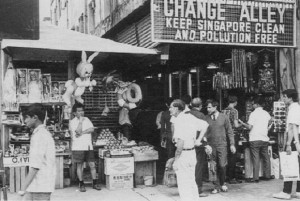
With ‘Sing’ dollars in our pocket one could not go past the Cellar Bar, which was below street level (obviously), and a cool, quiet place (being late morning) for a cold Tiger beer. It would liven up at lunchtime and in the evening.
To illustrate how important the Cellar Bar was to the seafaring fraternity, I will jump a head from 1963 to 1966.
After I’d finished my time as a cadet, and passed the exams for a Second Mates ticket I was sent, in April 1966, to Singapore to join an LST (Landing Ship Tank) as third mate. The Company had the contract to supply officers and crews for the various LSTs controlled by the British Ministry of Defence around the world. From 1962 to 1966 Malaya and Indonesia had been fighting an undeclared war, which dragged Britain, Australia & New Zealand in to this ‘confrontation’.
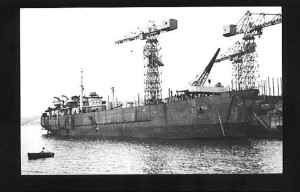 I joined LST Frederick Clover, which was built in 1945 as LST 3001, and named ‘Frederick Clover’ after the war, gross tonnage 4225, so not a particularly large vessel.
I joined LST Frederick Clover, which was built in 1945 as LST 3001, and named ‘Frederick Clover’ after the war, gross tonnage 4225, so not a particularly large vessel.
Our duties were to carry supplies and troops (the troops to and from) Borneo in support of the fight against Indonesia.
LST 3001- 1945/6
There were other LSTs on similar runs to Borneo, and the officers used to socialise at the Cellar Bar whenever their ship was in port. One day I asked, at the naval office, when a particular LST would be in port, because the third mate in this LST was a friend of mine. I was told that they couldn’t tell me because I wasn’t security cleared, and the movement of the LSTs were on a ‘need to know’ basis. I even explained that I was part of the LST fleet, but as I was still a merchant seaman, rather than Royal Navy, they couldn’t help me, although I’d signed the Official Secrets Act in case I gave away the top speed (10 kts) of the Frederick Clover.
Not a problem, my next stop was the Cellar Bar and I asked the girls behind the bar if they knew when my friend was due in Singapore. They were quite happy to tell me the name of his LST, and that he was due into Singapore the following day!, so much for ‘need to know’, and naval security.
Let’s move back to the celebrations of Singapore joining Malaya, to create the new country of Malaysia.
Early evening we visited Bugis Street for something to eat – the place was already ‘jumping’. Bugis St was famous for the food stalls, beer halls and ‘girls’, although many were not female, but males dressed as females. The ‘trans’ girls would parade up and down the street in their finery and offer to sit near or on someone’s lap while photographs were taken. For this service ‘she’ would charge a small fee. If they worked the street for a number of hours they would earn a very good living. It was known that certain first tripper boy seamen, around fifteen or sixteen years old would be caught up with the whole ambiance of Bugis St and slide off with one of the very attractive ‘attractions’. It didn’t take long for his mates to see the young first tripper running like mad towards them, as if the hounds of hell were after him. His introduction to Bugis Street nightlife was not what he expected.
Early evening for food and beer.
Around mid-night the ‘girls’ would show up.
Anybody wish to take my photo?
How to tell the difference between the ‘she’ men and real women? The real women couldn’t afford to dress as well as the ‘she’ men. I was always told to check the Adams apple on the ‘women’ – but I never got that close!
The celebrations went on for a few days, but the ‘marriage’ of Singapore and Malaya didn’t last. It was all over by the 9th August 1965, when Singapore became an independent state. This was still in the future.
Our next port was Hong Kong. We anchored in the harbour on the 21st September, just a week after entering Singapore harbour.
Once again the smell of Asia fired my imagination of day’s gone bye. They do say that you can smell money in Hong Kong – everyone is after their share.
Bum boats surrounded the ship offering everything from sew sew girls, who actually did repair clothes, washer women who promise fast turn around of your laundry, food boats offering hot (heat hot and spice hot) food with a cold drink for a very cheap price, haircut and a free shave, there seemed to be a boat for everything. The smaller boats rowed by a single oar at the stern, operated by a female, the richer boats had small engines. Taxi boats came alongside to offer a ferry service to Hong Kong Island or Kowloon. Rates were discussed and bartered until we all had an understanding of the ‘correct’ fee for the trip ashore.
Similar to Singapore we were at anchor and worked cargo in to junks and barges. Everything that we required from fresh water to frozen food and fresh vegetables had to come out by boat. Very few ships had the ability to turn seawater in to fresh water. Working cargo, while at anchor, occurred in so many ports from the Persian Gulf to the harbours of Penang, Singapore, and Hong Kong that we never found it strange.
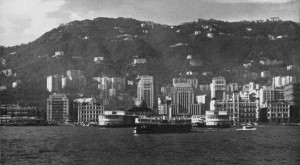 The Star Ferry operated between the island and the mainland (Kowloon) and seemed to take quite a while to complete the run. I returned to Hong Kong in 2006 and due to land reclamation the trip today is much shorter and some how not as romantic.
The Star Ferry operated between the island and the mainland (Kowloon) and seemed to take quite a while to complete the run. I returned to Hong Kong in 2006 and due to land reclamation the trip today is much shorter and some how not as romantic.
Hong Kong in the 1960’s
Hong Kong forty years later in 2006
Of course we’d seen the film ‘The World of Suzie Wong’ and we’d read the book, so we had to find Suzie Wong during our short stay.
We covered as many bars as we could find. We worked all day on the ship, and partied most nights. At nineteen one had stamina! Every bar we entered offered us a box or book of matches, after all most of us smoked in those pre PC days. Smoking was virtually compulsory considering the very low price of cigarettes, which were duty & tax-free on the ship. Samples of the matches from some of the bars are shown in this picture.
We did find Suzie’s bar . . . not a bit like I imagined.
We were not on holiday and could only get ashore in the evening, so we didn’t spend every spare minute checking out the bars, but did manage to get to the Peak via the Peak tram. Even these sites have changed – even the green trains are red, (or where in 2006) and the view has changed somewhat.
After two days working cargo, the clanking of the anchor chain, as we weighed anchor, heralded our departure. We were off again, and this time to Japan.
The short voyage, via the Straits of Formosa, took us six days and we anchored off Yokohama. The quarantine authorities would not let us go alongside until they had checked all officers and crew via stool sample for various diseases. We were issued with very small ice cream cups in which we had to place the sample and seal the container. The samples were collected and rushed ashore – I have no idea what they did with the samples, but we were allowed alongside the following day.
Yokohama, in Tokyo Bay, was our first port of call of our coastal trip around Japan. If I thought Singapore and Hong Kong were foreign, Yokohama was real ‘foreign’. The people were different from Chinese, very friendly, but different. Fortunately at that time the exchange rate for a British pound note was 1060 Japanese yen. The current exchange rate is 172 yen for a British pound. How the mighty have fallen.
At least this time we were alongside, and we didn’t have to worry about shore boats, just taxis getting in to & out of the dock area so that we didn’t have to walk too far. We were alongside for three days, and the evenings were spent in the town, but as time passed I realised that even at the fabulous exchange rate I was running out of money. My weekly wage was about £5.00 a week and a taxi to / from the city was expensive. I didn’t see much of Yokohama city except in the evening when it was dark. Being October the sunset came early.
At 3.30 am on the third night we were called for departure stations. We manoeuvred off the wharf to the outer harbour around 6.00 am, and as the pilot climbed down in to the pilot boat I looked back at Yokohama and saw the sun shining on Mount Juji. When I was in Japan they told me that if you see Mt Juji as you leave, you would return. Each voyage I used to look for the mountain and I was able to see it, until on my last voyage when I couldn’t, because we sailed at night.
I didn’t return to Japan again until the late 1980’s. This time I arrived by plane, because I was working for another company, and no longer at sea.
The short trip to Kobe saw us off the wharf the following day. It was a very short visit because within hours we had left and moved across the bay to Osaka.
It dawned on me that I would have to use the public transport if I wished to see Osaka. My earning powers could not keep up with my spending powers, and the only expense I could control if I wished to see the city was the use of taxis. So if I wanted to use public transport I had to learn enough Japanese to use the local transport system.
We worked cargo for three days before returning to Kobe. In Kobe we where due for dry-docking, and this confirmed to me that I had to learn some Japanese.
I had a very unusual experience on my first run ashore in Kobe. As we left the ship my friend asked about the railway station and I pointed out the street and where we would turn right and then left for the station. I’d never been to Kobe and hadn’t seen a map of the city, so I do not have any idea how I knew the directions, but I knew I was correct. We followed my directions and they were correct. I must admit it left me with a very funny feeling. Sannomiya was the name of the station, but I didn’t know the name when I gave the directions.
The Kobe Port Tower had just been finished, but I don’t think it was open to the public. At 108 mtrs it looked huge to us at the time.
Sightseeing was not at the top our list, but Clancy’s Bar in Motomashi was somewhere that we wished to see. Clancy was an Australian who had stayed in Japan after the war. He was large fellow that one respected, and didn’t wish to cross. He ran the bar with discipline. Clancy’s was a place that you could take a girlfriend, but you would never go there to find a girl to ‘chat up’. It was not that type of place.
Occasionally some of the patrons would have a little too much drink and start trouble – this was when Clancy made his presence felt, and the troublemakers would be out on their ear.
At the end of our time in dry dock we moved to a wharf for loading – what a shame that we had to moor next to a Japanese whaler. The whaler was a large vessel and the smell of her cargo as she unloaded the whale blubber remains with me even today. This was well before the anti-whaling lobby got their act together.
After loading in Kobe we sailed through the Inland Sea to the open waters of the Yellow Sea off the coast of China, our next port was Tientsin (now Tienjin).
This was my first visit to Communist China, and I had been warned about what we could take in to the country, and to be very aware of the sensitivity of trading with the Chinese. At the time I was reading a novel called The Blue Ants by Bernard Newman, which was about a war that breaks out between China and Russia. In the novel the Chinese army is supplied by millions of people carry the supplies on their head. The standard dress for everyone at that time in China was blue shirt and blue trousers – everyone wore the same, hence from the air they looked like blue ants. The book was banned in China, and I was warned that I could get in to trouble if the book was found in my cabin. I am sorry to say that I threw the book overboard as we approached the pilot boat. I’d finished the book, and intended to buy a fresh copy to keep, but I have never seen it since. I cannot pass a second hand bookshop without going in for a browse, but not just for The Blue Ants.
My first impression of China was not a happy one – an armed guard at the top of the gangway and another at the bottom. The dockside labour would not speak to us unless it was via the foreman (political officer??). As part of the crew we had Hong Kong Chinese – the carpenter, the ‘donkey men’ (the Johns) who were engine room fitters, and one or two others. None of them spoke to the shore labour and the shore labour made sure that they were never in contact with these ‘gweilo’ (foreign devil) Chinese.
The one thing that I noticed when visiting Shanghai later in the trip, was the lack of seagulls and domestic cats. I often thought that perhaps the local population had eaten them, because many of the people looked hungry.
Once again I was instructed to take the draft reading. This time I had to be given special permission to pass the armed guard at the top of the gangway, and on stepping ashore on to the wharf an armed guard accompanied me to the bow and stern as I read off the draft. We did not go ashore for any entertainment – entertainment was banned. Loud speakers on the wharf blared out Chinese propaganda twenty-four hours a day exhorting the labour to work hard. I wouldn’t have minded if the exhortations had been accompanied by music, at least I could have slept through the music, but the constant shouting did cause us to lose sleep. At least the shouting was in Chinese (Mandarin) so there was little chance of us being distracted or ‘converted’.
We were not sorry to see the back of Tientsin as we sailed for Tsingtao. The city of Tsingtoe was different, it was a naval base, and the locals were very twitchy.
Once again armed guards boarded us, along with the pilot, and watched our every move. We passed a Chinese submarine moored to a buoy, and the guards became quite agitated as we used binoculars to scan the sub, more out of interest than spying. After all we could see that it was an old diesel sub, circa WW2, and it was showing a lot of rust. Once the guards saw what we were looking at they became very ‘upset’ waving their rifles etc so we quickly looked the other way.
They went through the ship in great detail checking every cabin and the crew’s quarters. I was glad that I had got rid of ‘The Blue Ants,’ the guards appeared to be a little unstable.
During our time in Tsingtao, an army officer asked me if I could read. I told him that I could, and he presented me with a number of books, in English. They were all propaganda books, and one was a red book containing the sayings of Chairman Mao. I am certain I still have these books somewhere. I wonder if the silver fish found them as unappetising as I did, when I tried to read them at the time.
Once again it was guards on the gangway and we were not allowed ashore except to read the draft. This was another port to be crossed off my bucket list.
Next stop Shanghai. What a city to spark the imagination, from the early days of the 1800’s to recent times. Shanghai conjured thoughts of romance, white Russian émigrés, Charlie Chan types, and all the excitement of the East.
We were allowed ashore! But we could only visit the Friendship store and the old Shanghai Club, locally known as the ‘British Club’, now (in 1963) called the Seaman’s Club, which used to have the longest bar in the world. Noel Coward is supposed to have placed his cheek on the bar, squinted along it, and said that he could see the curvature of the Earth. There isn’t a record of how much he’d had that evening.
The Friendship store sold Chinese goods, but only to foreigners. The local Chinese where not allowed to shop in the store.
As I, and another cadet, stepped out of the dock area, a trishaw driver offered his services to take us to the Friendship Store at a rate that we couldn’t refuse. The trip was not far, and as we stepped down we offered the fare, which he refused and said that he would wait for us. After a little arguing with him in broken English (Chinglish?) we agreed that he could wait, and we entered the multi-storey shop.
The store contained many items of carved wood, from huge wardrobes to tiny figures pulling rickshaws. Much of the furniture was covered in dust showing us that business was not all that good. I did buy two decent size Chinese jars of pickled ginger.
They were to be a present for my mother, who loved pickled ginger.
After about half an hour we had our fill of ‘shopping’ and left the store to be greeted by our friendly driver. Next stop was the Shanghai Club, come British Club, come Seaman’s Club – we used the British Club title and the driver knew exactly where we wanted to be taken. Even though the Government had renamed the building, everyone referred to it as the British Club. The trip along the Bund was bumpy as we crisscrossed the tramlines and bounced over the cobbled stones, but who cared it was the Shanghai Bund!
Once again our driver told us that he would wait.
On entering we came face to face with a large statue of Chairman Mao, with his right hand held out in greeting and the words ‘Workers of the world unite’ carved at the foot of the statue.
After passing the Chairman we found the world famous bar. Highly polished dark wood that one would expect from this type of British Club – all old world charm, three bladed fans on long stalks hanging from the ceiling added that little bit of yesteryear; but not quite old world. The Chinese had cut the length of the bar in half, and created a dining room, after one walked passed the begining of the world famous bar.
The black and white picture was taken in 1912.
Refurbished on the right and now part of the Waldorf Astoria
A quick beer in the now shrunken bar, and we moved to the dining room. I was really looking forward to my first genuine Chinese meal in China, because I liked Chinese food, having been introduced to it in Liverpool. There were a number of Chinese restaurants in Liverpool owned and run by Chinese who’d given up the sea and stayed ashore.
What a disappointment – the food was bland in the extreme, hardly any taste and the lack of spices was very noticeable. Being used to the curries and spicy foods on our ship we missed these added condiments in the Shanghai Chinese food. It was later that I realised that the Liverpool Chinese were nearly all Cantonese Chinese from Hong Kong, and their food is rich in spices (not necessarily spicy hot). The Shanghai Chinese food seemed to have been ‘dumbed’ down for western seamen.
We had a strict curfew and had to be back onboard by 11.00 pm – the curfew was enforced by the Chinese authorities, not by our Captain. On leaving the British / Seaman’s Club our personal trishaw was still waiting. The driver (it was a bicycle style rickshaw) was dozing on his haunches near his trishaw jumped up to make sure that we did not use a different trishaw.
On reaching the dock gates, with armed guards patrolling the gated area, we climbed down from the trishaw and paid the driver, giving him a good tip. He handed the tip back to us shaking his head and looking sideways at the guards. We then offered a couple of packs of British cigarettes (Rothmans) in an effort to show our appreciation (his fee for the night was so low we couldn’t see how he could possibly survive without tips) – the packs were refused; he bowed low and climbed on to his trishaw, his eyes constantly checking the movement of the guards who had been watching us since our arrival. It was obvious that one worker could not earn any more than the soldiers, and he was not going to take a chance of being arrested, or causing any trouble for himself. The best we could do was to smile, thank him again, and wave him good night as we carried our ‘friendship store’ purchases through the gates towards our ship.
Our next port of call was to be Hong Kong, where we knew our tips would not be refused.
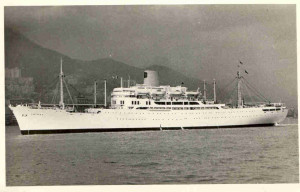 During the trip from Shanghai to Hong Kong I received a message from the Company that I was to leave the ship in Hong Kong, because I was to travel as a passenger aboard the ‘Cathay’ (a P & O passenger liner) to Yokohama, to join a different ship.
During the trip from Shanghai to Hong Kong I received a message from the Company that I was to leave the ship in Hong Kong, because I was to travel as a passenger aboard the ‘Cathay’ (a P & O passenger liner) to Yokohama, to join a different ship.
P & O liner ‘Cathay’ – 1963 – Hong Kong to Yokohama, Japan.
I was sorry to leave my current ship, because I had made some good friends and had even become used to the small cabins. Without the heat of the Persian Gulf, sleeping was no longer a problem.
At nineteen I found the Cathay to be very ‘POSH’ (Port Out, Starboard Home) and at times I felt out of my depth. Few people cruised, as they do today, and many of the passengers were people being transferred from one country to another because of their job, or were going home on leave. I think the Cathay ‘terminated’ in Japan, before returning to the UK via Hong Kong, Singapore, Penang, Colombo, Bombay, perhaps Bahrain, before transiting the Suez Canal and home.
The seven day voyage was calm, and overall it was an enjoyable trip even though I had concerns for my bar bill on a lowly cadets wage.
We arrived at Yokohama around 8.00 am on the 23rd November, and I expected to see the promised bands on the wharf. They were not there, and only two ladies in kimonos stood near the gangway with trays of cherry blossom pins to greet the passengers as they stepped ashore. I had been told that the arrival of the ‘Cathay’ produced a holiday atmosphere, and that a band and ladies, in national dress, dancing a traditional dance would be greeting us.
As I made my way on deck to listen to the band I heard a lady sobbing, looked around and saw others either wiping their eyes or crying softly. I asked a fellow passenger what had upset everyone and was told that President Kennedy had been shot and killed. To us in Japan it was the 23rd, but to those in Dallas it was still the 22nd of November.
My first thought was that this act was the beginning of perhaps an attack on the US, and if this was true, the UK would be involved, and because I was in the Royal Naval Reserve, how on earth could I make myself available, being in Japan?
Breakfast was a lonely meal that day. Few spoke, as people absorbed the news and considered their own future thousands of miles from home. The Berlin Wall was only two years old, and the Cuban crisis was less than a year earlier – was it any wonder breakfast was quiet?
By lunchtime I’d joined my next ship – 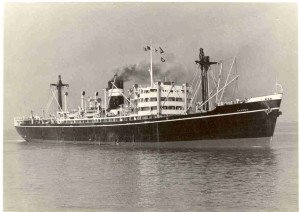 ‘Chanda’, and once again my ship had been built during the war (1944), we were the same age, but this time the cadets had a little more room.
‘Chanda’, and once again my ship had been built during the war (1944), we were the same age, but this time the cadets had a little more room.
From Yokohama we sailed to Nagoya, famous for its ceramics. At that time Nagoya was a quiet place to visit and the main thing that I can remember is loading carton after carton of tea sets for export.
Our next port was to be Moji on the southern tip of Japan, and to get there we would sail through the Inland Sea. What a beautiful stretch of water in which to sail.
Moji, in 1963, was not a cosmopolitan city, and was very quiet for a westerner. I did get time off and decided to go to the pictures to see Charlton Heston, in
The Ten Commandments – note the UK advert & a Japanese copy.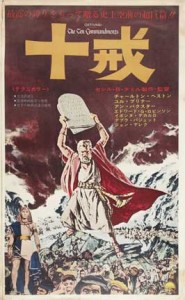
I bought my ticket and entered the cinema and took a seat in the middle far enough back that I could easily see the screen.
After a few minutes I was asked to move because someone else had booked the seat in which I was sitting. During the next five or six minutes I had to move several times because I was always in the wrong seat, and none of the cinema staff or the patrons could speak English, so I kept moving.
I ended up joining a small group of people near the front who were standing up waiting for the picture to start. This was when I realised that I’d bought a ticket that entitled me to watch the film, but standing up, I was not entitled to a seat!
I was so close to the screen that I had to keep swivelling my head, if I wished to see where an arrow had gone once fired from one side of the screen. Plus looking up Mr Heston’s nose for 220 minutes was not my idea of a day out.
Obviously the sound track had sub-titles in Japanese –one set down the right hand side of the screen from top to bottom, and the other along the bottom of the screen. I assumed they were different languages, Japanese (from top to bottom) & Chinese (along the bottom), perhaps to save issuing a Japanese, and a separate Chinese version (for Taiwan & Hong Kong, but not mainland China) of the film, so saving money.
Most of my ‘standing’ group did find seating on the steps at the side of the cinema, very close to the screen. This was my one and only visit to a Japanese cinema.
Our next port was Shanghai, and once again we visited the Friendly Store followed by the British / Seaman’s Club. This time there was a little problem.
 In the foyer of the Club stood the statue of Chairman Mao, and as I said before everyone had to pass the Chairman to get to the bar.
In the foyer of the Club stood the statue of Chairman Mao, and as I said before everyone had to pass the Chairman to get to the bar.
This figure illustrates the pose of the Chairman for his statue. We were not allowed to take a camera ashore, so I do not have a record of the incident, but I do remember it vividly.
My friend and I had a couple of drinks, and as it was getting late, we decided to return to the ship. In the alcohol half of the Long Bar there was a group of Scandinavian seamen who were a little worse for drink, and they were very noisy.
As we moved out of the bar to the foyer I saw that one of the drunken seamen had climbed Mao’s statue and was trying to hang a small American flag from the Chairman’s little finger of his right hand. The statue was about eight or nine feet tall, and appeared to be extremely heavy, so there was little chance of it toppling over, even with the extra weight of the seaman.
We took one look at the scene and made a beeline for the exit door. The last thing we wanted was to be involved with the start of WW3. As we left the building police cars arrived, and a great deal of shouting began. We managed to climb in to our trishaw during the confusion, and make our ‘escape’.
From Shanghai we sailed for Hong Kong.
On entering Hong Kong harbour we encountered thick fog or very heavy sea mist. It was so thick that we put our engines on ‘dead slow’, so as to enter harbour very carefully. We had lookouts at the masthead, as well as down aft in case another ship came at us from astern. I was posted forward to the forecastle, with a crew member, to listen for sounds. The crew member listened on the port side, and I listened on the starboard side. Regular blasts, from our foghorn rent the air to inform any other vessel of our position.
A bell was permanently located on the forecastle, for the lookout when at sea. If at night he saw a light on the starboard side he would strike the bell once, for a light on the port side it was two strikes, and dead ahead was three strikes. The number of rings told the officer on the bridge the direction of the light. The bell was used in the same way during fog. Instead of distant lights, striking the bell indicated sound or even a sighting.
Suddenly I heard a sound and rang the ship’s bell with a single stroke. The sound that I could hear was very close. There was also a phone link between the bow and the bridge, and now it rang.
The Captain asked me what I’d heard.
‘Judy, Judy, Judy, Sir!’
‘What the blazes are you talking about?’
‘It’s the name of a pop song, Sir. I think we are close to a junk, and they have their radio on very high.’
As I finished my report a small junk came out of the mist, and when the junk’s crew realised how close they were to a 7,000-ton ship, they altered course to pass down our starboard side, shouting and cursing in Cantonese, and waving their arms in anger as Johnny Tillotson kept them company with ‘Judy, Judy, Judy’. The junk rocked back and forth due to our wake, even though we were hardly moving through the water.
Slowly the fog began to lift and we were able to enter harbour safely and anchor at the appropriate place.
We were in Hong Kong for a very short time, and sailed on the 20th December 1963 for Bombay, it would be Christmas at sea this year – my second Christmas at sea.
As I mentioned earlier we were not required to carry a doctor, but we did have the Ship Captain’s Medical Guide with sketches of boils, broken arms, piles and sexually transmitted diseases, so when I was asked to help the first mate of one of the ships that I sailed in I treated it as a learning session.
On this particular vessel one of the crew complained of a boil on the cheek of his behind and he had problems sitting down.
We had a small cabin that was used as a ‘hospital’ and I was told to prepare the crew member on the bunk for the first mate to examine the offended part.
The seaman stripped and lay face down on the bunk with a very nasty boil pointing to the deck head.
On entering the First Mate looked at the boil and started to collect a few shiny instruments on a silver tray. This included probes and knives. The seaman’s eyes followed every move and he started to say that he was fine and that he would return to work.
‘Can’t have you unable to sit down,’ said the First Mate, ‘this’ll be over soon, when you will thank me.’
He wiped the boil area with disinfectant and warm water as he did so he ordered me to go and get a bottle of brandy and a brandy glass.
I returned with the bottle and glass and handed them over. I thought that giving the patient a shot of brandy was very decent of the Mate.
The First Mate poured a healthy slug in to the glass and swirled it around. He then tipped the lot down his own throat, lit a match, dropped it in to the brandy glass and slammed the glass over the boil.
The patient howled his head off and tried to get up but he was being held down by the Mate and I had his legs.
The flame in the glass burned out and the ensuing vacuum sucked out all the rubbish from the boil, including the root. The Mate worked the glass loose of the seaman’s flesh gave it me and told me throw it overboard.
The boil area bled, and in doing so, cleaned itself. The Mate wiped the area down with antiseptic solution, stuck a large sticking plaster of the distinctive hole of the ex-boil and helped the seaman to his feet.
‘Come back tomorrow and we’ll see if it healing properly’
The seaman saluted limply, and after dressing, waddled off to his accommodation.
The wound was clean the following day, and the whole episode, in today’s jargon, was a steep learning curve for me.
We arrived off Bombay on the 31st December, and anchored to await permission to go alongside. At midnight I was given the honour, because I was the youngest person aboard, of ring sixteen bells on the ship’s bell at midnight.
At midnight the harbour was a deafening sound of bells, ship’s whistles, foghorns, fire works and the shouts of officer and crews from other ships at anchor, particularly other vessels of our Company. Bombay being a major port for the Company, and it was seldom that one or more Company vessels were not in port.
……………………………………………………………………………………………………………………………………………………………………………………………………………………………………………
1964
We sailed from Bombay for Karachi on the 3rd January 1964, and arrived on Sunday the 5th January, when we anchored off the port to await our turn to go alongside.
Later in the day we were involved in a small drama and had to move our anchorage because another ship had fouled her propeller, and she was dragging her anchor and unable to manoeuvre.
Once alongside I was invited by a fellow cadet to visit his home. Karachi was his homeport so he was keen to see his parents and family.
We caught a taxi to his house, and as we walked up the small pathway to the front door I noticed a number of people, adults and children, running through the house. Lights were switched on and off as they hurried to another part of the building.
On entering the house I was greeted by my friend’s father, his uncle and brothers. They all seemed please to meet me and I was invited to join them for their evening meal. The dining room was similar to the rooms that I’d seen in Bombay, with a large carpet, on which a table and chairs had been placed. I could smell the meal cooking and was informed that we were going to have curried goat.
During the hubbub of the curried goat and rice being brought in by his brothers, I managed to ask my friend if his mother was at home. He looked at me and whispered that family females were not allowed to be in the same room as myself, because I was not of the family, and I was not allowed to see his mother or his sisters. The earlier running by family members, as we walked up the path, now fell in to place. It dawned on me that the only people I’d seen running where adult females and young girls. His mother and his aunt were the two adult females with his younger sisters in tow.
I never did meet his mother.
The meal went well (as far as I was concerned), and because I’d been living with Indians and Pakistanis while at sea, I was aware that only the right hand was to be used when eating. Chapattis were pulled apart and used to scoop up the rice, meat and curried liquid. I was offered a fork and spoon, but I wanted to experience a real Pakistani meal the local way.
My only negative comment about goat meat is that the bones in the stew had been smashed apart rather than disjoined, so I had to be careful not to swallow bone splinters. Throughout the meal all of us were politely extracting broken goat bones from our mouth while sucking whatever meat was left on the sliver.
I sailed with another Pakistani cadet later, but he was not as ‘high-class’ as the cadet who took me home to meet his family.
The other cadet, who was junior than me, and I were caulking the wooden area of the boat deck, which consisted of molten tar being forced between the deck planks. It was a dirty job and we both had tar on our flip flops, legs and hands. The junior cadet excused himself to use the ‘heads’ (toilet) and returned a few minutes later. Shortly after his return I heard my name bellowed by the first mate. I stepped out of my flip flops and entered the accommodation and made my way to the first mate’s cabin.
The first mate was a tall well-built Englishman married to a tiny Japanese lady who was accompanying her husband on this particular voyage. A very irate first mate, clutching a tar stained cloth and the bottle of white spirit, stood outside his cabin. He was furious that the previous user of the toilet had jumped up on the seat, as many Asian and Middle Eastern cultures tend to do, but had failed to remove his flip flops, and had contaminated the seat with tar. His wife had been the next user of that seat.
The ship was built at the end of the war and the only en-suite cabin was the captain’s. All other officers shared various bathroom facilities.
I listened as the Mate let off steam about the junior cadet. As with storms at sea and upset senior officers’ one has to wait out the bad weather before all is calm again. I was given the job of teaching the junior cadet bathroom etiquette as an officer.
Shortly after the ‘tar’ incident the cadet left the ship and I never knew what happened to him later. Perhaps he is now Captain of his own ship; with, I hope, an en-suit cabin.
On the whole, from my point of view, Karachi was not all that interesting town. The old colonial buildings hinted at the grandeur of yesteryear when Pakistan was part of India.
In Karachi I attended a lifeboat class to show that I knew how to lower a lifeboat via a davit, how to row, and to take command. Because of my time at Conway I was very familiar with the handling boats of a similar size to the lifeboat, so the day was a pleasant break from the routine of the ship. I still have the certificate, duly stamped by the Karachi authorities. The other lasting memory of Karachi was being given a cholera ‘top-up’ vaccination and I am sure the needle had been used for sewing shirt buttons, it was so blunt.
During my time at sea we had to keep up to date with all our various vaccinations, which include yellow fever, smallpox, cholera & of course TAB (typhoid paratyphoid B vaccine). Today TAB is more common as a computer use for horse racing than a medicinal.
We sailed around midnight of the 10 / 11 th January for our next port, which was to be Kuwait – again.
On entering the Persian Gulf the wind became very strong and the next thing we knew we were in the middle of a sand storm. It was the strangest sensation being at sea, and seeing the paint being stripped from the ship’s rails by a sand storm.
In a strange way the sand storm helped the cadets. Hand chipping safety rails before painting was very laborious, so the sandstorm helped with the paint removal. To finsh the job we used short lengths of chain that we wrapped around the rail and worked back and forth to any free loose or damaged paint. The sandstorm might have been unpleasant but it did save the cadets energy.
We anchored off Kuwait and small dhows would come out to us.
Like many of the Middle Eastern countries Kuwait was a ‘dry’ State, as in alcohol, not as in sand.
At times this fact allowed for a little entrepreneurial trading to take place. Many of the Kuwaitis liked a drop of Scotch, but they couldn’t buy a bottle ashore, so they would offer to buy from those of the ship’s crew willing to sell. A small dhow at night would not attract attention near an ocean going vessel.
The crew member always made a healthy profit in dinar – the local currency, which was as strong, if not stronger, than the pound sterling at that time. Being paid in Kuwait dinar would require a trip to the money exchange in Bombay, which could be a problem, because currency was tightly controlled. The best way to make a further profit was for the crewmember to go ashore in Kuwait and purchase gold jewellery for males – not females. Rings, money clips, necklaces were the favourite because many males would wear or use this type of jewellery. In Bombay there was always a very ready market selling gold in any form.
One could be paid in Indian rupees or in a foreign currency, such as US dollars, pounds etc, but the exchange rate from rupees to foreign currency was very unfavourable on the black market.
Unless, of course, one accepted rupees and changed the money at the legal exchange rate, using a foreign passport, to show that you were leaving the country. The profit overall, from a humble bottle of Scottish whisky, via jewellery, to hard currency would make sure a very pleasant time was had in Japan, Singapore or even Bombay itself.
Of course, I never became involved in the alcohol to gold game.
From Kuwait we moved on to Banda Shahpur in Iran (now called Banda Khomeini), which was another forgettable town near the mouth of the Shatt al Arab. Khoramshah, Basrah, and Abadan followed Banda Shahpur, before we left this delightful area for Bahrain, where at least they did sell Red Barrel beer, imported from the UK.
At that time there was still a strong British presence in Bahrain – consisting of army, Royal Navy vessels and the RAF. It was an important bunkering port, as well as one of the main transit stops for the Kangaroo route from the UK to Australia for BOAC and Qantas. The B 747 had not yet entered global service, and the main stay was the B707 or Comet. A typical ‘fast’ flight from London to Sydney in a B707 in March 1964 via QF 744 would have been London, Rome, Teheran, Delhi, Bangkok, Singapore, Darwin, and Sydney. A passenger would leave London at 4.00 pm on Monday and arrive around 0615 am Wednesday. There wasn’t any in flight entertainment, or flat beds in business class. The seating configuration consisted of three seats aside in economy, and you chatted with your neighbour or read a book. With six transit stops passengers did have the ability to stretch their legs.
BOAC (now British Airways) operated a combination of Comets and B 707 on their Asian / Australia routes, but often calling at different ports than Qantas, before arriving in Sydney.
A BOAC example would be London, Zurich, Cairo, Kuwait, Delhi, Rangoon, Hong Kong (change aircraft), Manila, Sydney – leave London Saturday 11.15 am to arrive Sydney Monday at 10.15 am. It was along haul.
From Bahrain it was a short trip (about 300 miles) to Dubai.
The Dubai of 1964 was nothing like the Dubai of today. In 1964 we unloaded our cargo in to dhows or barges, because they didn’t have the facility for ocean going vessels to go along side. We went ashore in small dhows and virtually walked up the beach in to the town. The market sold Japanese radios, record players, and Chinese toys made from tinplate with very sharp edges. The town was very hot and dusty.
The small river (called the Dubai Creek) flowed sluggishly towards the Persian Gulf in 1964.
Today, people from all over flock there for their holidays, but in 1964 we only went ashore to stretch our legs and buy a radio (duty & tax free of course) after a lot of haggling.
From Dubai it was onward to Karachi, followed by Bhavnagar in Gujarat, India, and then to Cochin missing out Bombay. At least this time I didn’t find a dead body.
The voyage was a repeat of my first Asian trip – Penang, Hong Kong, the Japanese coast, but this time we missed out China, and headed back to Hong Kong, Bombay, the favourite ports of the Persian Gulf, followed by Kandla in the Gulf of Kutch, India before returning to Karachi in June 1964.
It’d been a year since I’d flown in to Kuwait, so the Company put me ashore in Karachi to await a UK bound ship. I moved in to the Beach Luxury Hotel for the next eighteen days.
This hotel was much better than the Bristol Hotel in Kuwait; at least I could buy a beer. It also held floorshows in the evening. I’d never seen a real floor show in a hotel or restaurant, except via the cinema, curtesy of Hollywood. The nightly show guaranteed at least one person in the audience. Talk about being star struck, I was entranced with the nightly show.
The two things that I do remember about Karachi in 1964 was a three-legged jackal in the Karachi zoo, and visiting a horse racing meet and watching a horse called Solomon Star, and in brackets (formally Woodland Star). Never having been very good at gambling I thought the last horse to bet on would be an animal linked to me – so I didn’t bet on Solomon Star, but of course it romped home, thus confirming my lack of gambling skill.
Fortunately I didn’t receive the same welcome that Paul McCartney received a week or so before my arrival. He’d been mobbed at Karachi Airport and police had to protect him from screaming girls. The Beatles were on the way to Hong Kong for a concert as part of their world tour.
07th July 1964 I joined the Chakdara for the voyage back to the UK. She was more modern than my two previous ships, having been built in 1951. She had a very different ‘feel’ to her because she was a ‘home line’ ship, and she carried twelve passengers. She received visits from Head Office, whereas the Eastern line vessels never came in contact with HO, and so where a little more relaxed in atmosphere.
We sailed for Ceylon at 5.00pm on the 9th July and hit bad weather as soon as we cleared the harbour area. The Chakdara rolled and pitched due to the monsoon and it wasn’t long before a number of us felt slightly under the weather. Even though we felt ‘off’ we still had to turn to, and complete our duties. Lying in bed all day was OK for the passengers, but not the officers and crew.
After a couple of days the rolling became easier and we began to feel a lot better. We arrived off Colombo in Ceylon on the 13th July, worked cargo for a couple of days and sailed again, this time for Madras on the east coast of India. Ceylon didn’t change its name to Sri Lanka until 1972. Even now I still think of the country under its old name.
Madras is now called Chennai. We anchored off late in the afternoon of the 17th July, and the ship was fumigated before we were allowed alongside.
The following day the Captain allowed two of us to go ashore under strict instructions that we had to be back on board no later than 6.00 am the following day for our departure to Calcutta.
Madras was a pleasant place, but it could not hold our interest until 6.00 am the following morning, so we decided to return to the ship around 11.30 pm.
On entering the dock area we noticed that our ship was no longer at the same berth as she was a few hours earlier. We ran to the berth thinking that she had been moved further up the quay.
On reaching the original berth a well-dressed Indian stepped out of the shadows and asked if we were cadets from the Chakdara, with him was an armed soldier.
We agreed that we were from the Chakdara and asked where our ship was berthed. He pointed to a vessel turning in the outer harbour.
‘You are booked on the next train to Calcutta, and an armed guard will accompany you’ said the agent.
‘How were we to know she was going to sail early?’
He shrugged his shoulders and spoke to the guard, who moved towards us to make sure we were not illegal immigrants trying to enter India.
As he did so we noticed a small boat passing near the steps that led from the quay to the water, and we both ran down and jumped in to the rowing boat. The dozing boatman was suddenly wide-awake.
We waved money at him and pointed to our ship in the outer harbour, and we set off in pursuit. Behind us the armed guard was not at all happy at losing his quarry.
Our ship was turning very slowly, and the boatman was pulling his oars like mad in an effort to catch the Chakdara. While the boatman rowed, my friend and I stood in the stern shouting and waving like demented fools in an effort to attract attention.
The ship completed her turn and was now pointing out to sea through the harbour entrance. We could see the white disturbance of the water caused by her propellers as she began to move ahead.
Suddenly the disturbance stopped and a Jacob’s ladder was lowered down to the water’s edge – they’d seen us.
We paid off the boatman and began the climb up the steep side of the ship, via the ladder. As we neared the top of the ladder the sound of the engines could be heard as half ahead was rung on the telegraph. Time was money.
As the senior cadet I was ordered to report to the Captain, to explain our lateness.
Even though I’d been told that we were not due to sail until after 6.00 am the following day, I should have known that we would have sailed early. At that comment from the Captain, I kept my mouth shut – I was not sure if he was joking or blaming us for being late.
Next port was Calcutta.
It was not a long voyage from Madras to Calcutta, but the river transit of the Hooghly was interesting due to the constant changing of the sandbanks. The distance from the sea to the docks is about 126 miles (203 km). We anchored at night and completed the river journey the following day.
Once along side we began to work cargo. The problem was the monsoon season. We had to contend with heavy rain that stopped after about an hour allowing work to resume, and then perhaps half an hour later the rain would start again. We had a system of tarpaulin tents attached to the ship’s derricks and as soon as the rain started the tent was hauled up to cover each of the hatches to protect to cargo. Our time in Calcutta should have been for a few days, but turned in to more like a fortnight, all due to the monsoons. Even visiting Calcutta itself was no longer a pleasure, due to flooding and heavy rain.
Street flooded in Calcutta 1964
Due to our inability to keep dry, when out and about, we entertained ourselves onboard, and of course the entertainment revolved around beer. Each evening around 10.00 pm one of the cadets would go ashore and buy curried suppers for those involved in the entertainment. We used to toss a coin for the first and second nights and after that took it in turns.
I lost the toss on the first night and trudged ashore to the local street stall just outside the dock gates. The food, various curries and rice, was packed in banana leaves, and tied with strong cotton, unlike the fish and chips in England, which is packed in newspaper.
I hurried back with my load and handed the parcels around, and sat to enjoy my own with another cold beer. Unthinkingly I used the banana leaf as a vegetable. I thought the leaf was edible, forgetting that it was in place of a newspaper wrapping. Fortunately I didn’t finish the whole leaf, just enough for me to realise my mistake, but enough to keep me ‘regular’ for the next two days. Of course the others noticed me eating the leaf, but didn’t say anything – friendship?
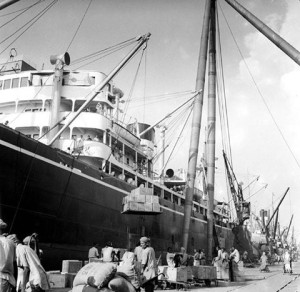
During the day it was the cadets’ duty to keep an eye on the loading, and that the cargo was being loaded correctly, and in the right order for discharge. This was well before containerisation came about.
As you see it was all manhandled and loaded via the ship’s derricks. One time I remonstrated with the dockside supervisors about the stacking of the cargo on to the pallet, before the pallet was lifted from the ground to be deposited on deck.
With indignation the supervisor raised himself to his full height, he came up to my shoulder, and stared in to my eyes, while saying with great dignity in his sing song Indian accent, ‘you think I know damn nothing, when in fact I know damn all!’
I nodded as if in agreement, turned and made my way to the officer’s accommodation where I could no longer hold in the laughter.
Finally, in spite of the rain, we managed to load all our cargo in a dry state, as well as a number of passengers who were returning to the UK. The additional faces in the dinning room and saloon expanded our conversations beyond the sea and ships in general.
Three nuns had joined us on their way home for retirement after they’d spent most of their lives in the hills of northern India as medical assistants, and spreading the gospel. They brought two dogs on board, and intended to pay for the six months quarantine in the UK, and keep them as pets. Part of our duties as cadet was to look after these animals, feed them, hose down the deck area that they were allowed to use, and make sure they didn’t fall overboard. The problem was that these dogs were vegetarians because the nuns could not afford to feed them meat during their time at the medical facility at the hill station.
We had other passengers, which included a couple of teenage daughters around eighteen years of age. It was going to be an interesting voyage.
It was the 4th August before we eventually sailed out of the Hooghly River in to the Bay of Bengal. We were sorry to leave Calcutta, because we had made friends with cadets from other ships, both British and Indian vessels, which were also locked in to the docks, due to the heavy rains.
For the next few days I was as sick as could be, due once again to the corkscrewing motion of the ship in the monsoon conditions. I hardly ate anything and would get sick cleaning my teeth. One way of losing weight I suppose, but when one is seasick and you are offered a gun to shoot yourself, you’d thank the gun giver. Seasickness is the most horrible feeling I’ve have ever experienced, because you can not stop the corkscrewing motion of the ship.
We were close to Ceylon when the ship’s corkscrewing changed to a steady roll, which was much easier on the body, allowing me to get used to an even roll in the ocean swell.
Finally we entered Trincomalee harbour, which is a natural beautiful circular harbour. We moored to a buoy and began to load chests of tea from barges using our own derricks. The loading was very labour intensive – loading a few chests of tea in to a cargo net, which would be brought on board and lowered in to the hold. A different labour gang would unload the net and then stack the tea chests in the appropriate area of the hold. In the meantime the empty cargo net is sent back for another load. This process started in the cool of the morning until lunchtime. After a lunch break the loading carried on until late afternoon. At night we would rig the cargo tents over the holds just in case of rain.
We were quite happy at the slow loading because it allowed us time to use the lifeboat to go ashore for picnics and a BBQ, along with some of the passengers. The lifeboat was powerful enough for me to be taught to ‘water ski’.
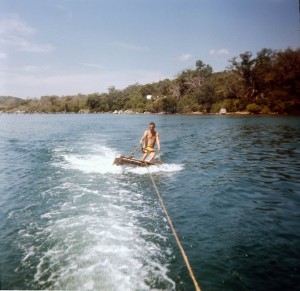 I used a cargo pallet from the ship; a long rope from the lifeboat and my friends dragged me around the harbour behind the lifeboat.I must admit it was great fun, and it didn’t take me long to find my balance riding the hatch board, and to bounce over the lifeboat’s wake.
I used a cargo pallet from the ship; a long rope from the lifeboat and my friends dragged me around the harbour behind the lifeboat.I must admit it was great fun, and it didn’t take me long to find my balance riding the hatch board, and to bounce over the lifeboat’s wake.
The next time I tried water skying would be in Victoria, Australia, twenty years later, so this small introduction at Trincomalee came in handy.
We stayed in Trincomalee for five days, which included a meeting with the tea owners, who joined us for lunch. Our next port would be Madras.
We arrived at Madras on Friday and sailed on Monday. I stayed on board; I was not going to be accused of not being aware of our sailing time.
Our next leg took us from Madras to Aden, across the harbour from Little Aden – at least we could walk in to the town at Aden. The trip from Madras took us eight days during which time I did my best to teach one of the teenage passengers named Annette, how to play chess.
The Company required all cadets to complete regular study after we had worked our ‘watches’ or day work, depending on the day. Any extra curriculum activity, such as teaching Annette (one of the teenage daughters) to play chess in the evening on the deck outside the accommodation, had to come out of sleeping time. I didn’t get much sleep.
From Aden we made our way to Port Tuffic at the southern end of the Suez Canal. We were waiting for a north bound convey to join, so as to transit the canal. On the voyage from Aden to the Canal the dogs went off their food. I wasn’t surprised, because if I’d been given stir-fried or stewed vegetables for as long as they had, I’d have gone off my food. So in an effort to encourage them to eat we gave them a curried meat dish. They both gobbled this down and the started to howl and run a round the deck. Obviously the curry was too strong. Then they started to drink and drink and drink. We had our comeuppance later as the dogs lost control of their bowels, and we had the unpleasant duty of clearing up the mess. Fortunately we were able to apply high-pressure fire hoses to the area, and blast it clean with salt water.
After transiting the canal at night we anchored off Port Said. Worked cargo for a few hours in to dhows, and then set course for Marseilles in southern France.
While in Marseilles we were allowed ashore, and Annette joined us. An interesting town steeped in history. It is France’s oldest city, having been founded by the Greeks over two thousand years ago.
It was a short taxi ride from the berth to the old port, and we were soon walking the old cobbled streets and drinking in the sites of the area that the ancient Greeks would have known. It wasn’t long before we’d forgotten that we were only visiting for a short time. The aroma of food wafting from the pavement cafes, mixed with the smell of Gauloises cigarettes is a lasting memory of Marseille.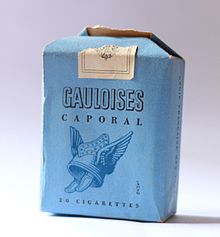
I even went as far as to buy a packet of Gauloises cigarettes as a change from the British & American cigarettes that I smoked at that time. In 1964 Gauloises hadn’t yet reached the stage of adding a filter to each cigarette so it wasn’t long before I was coughing myself to death with a burned throat. I keenly shared the Gauloises with the other cadets so as to reduce the number I had to smoke. The thought of throwing them away never occurred to me. My upbringing, that I was never to waste anything, wouldn’t allow me to throw them away.
We enjoyed our time in Marseille and ended up back at the old port area for a meal and a few drinks. Annette didn’t wish to stay out late, so she caught a taxi back to the ship.
The bar that we visited for our meal and drinks had two sliding doors at the front that sealed the bar from the street when the business closed for the night.
While we were in the bar we met up with three cadets from another ship and realised that we had friends in common in the BI fleet. Around ten thirty in the evening, I and the other cadets from my own vessel decided to go back to the ship. We left the bar and moved out in to the street to look for a taxi.
We’d left our ‘new’ friends in the bar, and they were a little over the top with drink, and had started to become noisy. I was glad to leave. Suddenly we heard a noise from the bar and we saw the barman shoving the remaining cadets out in to the street. Business had been quiet and I think the barman wanted an early night. His English was limited, and none of us spoke French – déjà vu for me, because I’ll never go abroad, so why learn French.
As the barman shoved the last cadet in to the street he pulled the sliding doors closed. The cadet turned and pulled them open – the barman closed them again while shouting abuse.
This open / closing procedure went on for about five more times until, finally, the barman poked his head out, and shouted at one of the drunken cadets. The cadet shut the door on the barman’s neck and he slid quietly down the rubber seals to the floor. The door was not forcefully shut on the man’s neck, but just enough to cause him to gasp, and to try and haul the doors open, by doing so he lost his footing and slid to the floor.
Fortunately, at that moment, a taxi arrived, and my friends and I climbed in and gave the driver our wharf number. As we pulled away from the old port area the peaceful night air was shattered by the sound of hee haw – hee haw of police sirens. Someone had called the cops.
The following day we sailed from Marseilles for Gibraltar.
The Straits of Gibraltar are only about eight miles wide from Africa to Europe. The Straits were originally known, in the ancient world, as the Pillars of Hercules. Once through the Straits and clear of the southern part of Portugal, we headed north.
It was during this phase of the voyage that one of the dogs gave birth to a number of pups. The nuns knew that the dog was pregnant, and had hoped that it would not give birth until after it had arrived in the UK.
After the pups had been born (about six in total, I think) it was explained to the nuns about the cost of six months in quarantine. They were devastated, because they only had enough money for the two adult dogs.
One morning, in the Bay of Biscay, when my colleague and I arrived to feed the dogs, only one pup could be seen. We never did find out what happened to the other pups.
Fortunately the Bay of Biscay was calm so we made good time to the English Channel, and finally to the mouth of the Thames, where we picked up the Pilot for the last part of the voyage up the river Thames to the Royal Albert Dock in London.
Three days later I signed off Chakdara and went home for some leave. This time I’d been given eight weeks, and I managed to fill them all, without getting bored.
In mid November I received a telegram that ‘my services’ were required in London, because I was to join the Chilka – launched 1950.
I enjoyed my time in the Chilka, because she was a very happy ship, and when I joined she was due to sail for the East African coast.
I signed on late in the afternoon, and had time on my hands after unpacking. In the ship’s bar for pre dinner drinks, whom did I meet, but friends from HMS Conway – one was the first tripper who was with me on my first ship, the tanker, and another who was also in my term during my time at Conway. We had a very pleasant evening of ‘remember when’?
During the next eleven days the ship worked cargo and I was on general duties depending on what the First Mate required. It was mainly day work, so I had the evenings free, which gave me time to visit London city centre, rather than just the dock area.
The cadets managed to visit a couple of very famous London dockland pubs near where the Chilka was docked at KGV docks (King George 5th).
The docks were opened in 1921 and closed in 1981, to make way for an airport. Part of the dock was filled in to create the runway and passenger terminal.

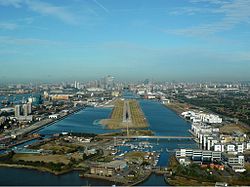
All our yesterdays, times change, but I bet the locals are better off today than they were in the 1960’s.
1960’s 1990’s
We sailed on the last Friday in November, in a rain squall. It was a dirty afternoon that turned in to an early cold and wet night as we made our way to the mouth of the Thames.
My watch was the graveyard watch – midnight to four am. As I climbed the ladder to the bridge, for the start of my watch, I remembered a line of poetry from John Masefield’s poem ‘Cargoes’ – ‘Butting through the Channel in the mad March days,’ but for us it was November, but butting down the Channel was exactly what we were doing that dark and wet Friday night. It’s funny how the smallest things come back to you years later.
After rolling down the Bay of Biscay we passed Gibraltar and headed for Almeria on the southern coats of Spain. From memory it was a small town with few attractions for the cadets, but we loaded over 2000 barrels of grapes in to our freezer chambers destined for Mombasa, in Kenya.
At the same time we were unloading bags of cement. Each day during the passage from London we tested the bilges for water, and at each test we found that we were dry, which was unusual because we always had some water in the bilges. On arrival in Almeria we began to discharge the bags and found that the cement had been contaminated with water and had set hard. The noise of jackhammers was soon heard as we completed the discharge of solid cement.
Our next port was Malta where we berthed near a company school ship Devonia. This vessel had been a troop ship and converted to carry school children around Europe on educational cruises. The cadets on board were known to both myself and the other Chilka cadets, so that evening it was an ‘educational’ down the Gut – which was a famous bar area of Malta. We were only in Malta for the one night, and sailed the next day for Port Said to join the southbound convoy through the canal.
Two days after clearing the Canal area we were off Port Sudan, and a few hours later alongside the wharf.
Port Sudan was a dusty town to say the least, but they did have a picture house, which I visited on my first evening ashore. I went to see ‘The Great Escape’, because it was the only English speaking film available. I’d seen it in the UK, but viewing it in Sudan was a completely different. I had the choice of ‘Stalls’ or ‘Circle’, so for the price I chose the ‘Circle’, which was just as well. Between the Stalls and the Circle area there were rolls of barbed wire to keep ‘Stalls’ patrons from cheating the system and sitting in the Circle.
Between looking up the nose of Charlton Heston in Japan, and making sure the barbed wire in the picture house was not part of the Great Escape my choice of cinemas, outside the UK, had a lot to be desired.
Next day in the early evening I was invited by the second officer to try out his aqualung off the reef that shielded the port. I didn’t have any experience of breathing underwater so the whole thing was quite exciting. He explained what I had to do, and how to breathe normally under water. The whole experience, for me, was out of this world to be able to be part of the under sea creature environment.
I’d been down about ten of fifteen minutes when the sun over my right shoulder ‘went out’ as if a cloud had passed in front of the sun. The problem was that I’d not seen a cloud in the last two days, so looked up to check what had caused the ‘cloud’. It was a large shark. I didn’t have any idea what type of shark it was; all I knew was that I was in his area and he was bigger and stronger than me. Fortunately I was able to swim ‘backwards’ while watching the shark, and as soon as I touched the coral reef I felt safer. I don’t know if it is true that a shark would not get too close to a reef in case he damaged himself on the reef. At the time I trusted this thought, and eventually made my way in to the coral reef’s shallow area, where I was picked up in our borrowed boat. After this episode I only went snorkelling near a reef.
Aden, one of my ‘favoured’ ports of call was our next stop. We worked cargo at night because of the heat and the nature of the cargo – ice cream and cheese. I’d never seen a cargo unloaded so fast as this cargo during the night. The labour must have been on contract that any loss of ice cream would have been a penalty or perhaps they had been promised an ice cream on completion.
From Aden we set course for Mombasa, in Kenya. Unlike today we did not have to worry about pirates from Samolia.
During our free time between Aden and Mombasa all the cadets had examinations to check their knowledge of ship construction, science papers, navigation and sea law. We were looking forward to Mombasa!
Christmas Day – we arrived off Mombasa and berthed alongside the Chakla, another Company ship. Also in port was a BI passenger ship named ‘Karanja’ and this name had a family link for me. My father was on the first ‘Karanja’, when she was discharging troops in Operation Torch off North Africa during WW2. She was bombed and sunk. Fortunately Dad survived, but I wanted to see the replacement so as to tell him.
The evenings over Christmas were spent along Kilindini Road, mainly at the Casablanca Bar and The Nelson Bar, very popular places that Christmas. During the Christmas period HMS Eagle arrived in port. She was a Royal Navy aircraft carrier with a compliment of over 2500. Among the crew were several bands and these bands obtained permission to play in the various nightclubs and bars. To say that Mombasa, during the Christmas period of 1964, was a ‘jumping’ town is an understatement. I can still remember the tusks that greeted us as we walked up Kilindini Road.
Kilindini Road’s famous tusks erected to commemorate Princess Margaret’s visit in 1956
From a post card I had in 1965
As you can imagine little cargo work happened over the Christmas period.
…………………………………………………………………………………………………………………………………………………………………………………………………………………………………..
1965
Early in the new year I did meet a young lady who had a car – very unusual at that time. She asked me to join her for a visit to Nyali beach, which is not far outside Mombasa, and she arranged to pick me up from the ship.
Of course this sounded a great idea, so I agreed, and she did pick me up in a small VW car, known at that time as Beetle.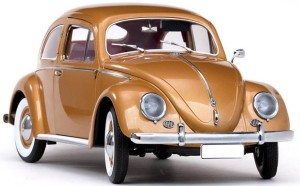
It was battered and dented, but it moved. The picture is of a new 1958 Beetle, to illustrate the design.
Little did I know that it wasn’t my charming self that was invited, but my ability to pick the car up a little or to push it – a lot! The car did not have a reverse (it was broken, and she couldn’t afford to have it fixed), so every time we had to reverse I had to get out and push it backwards. I have been very wary of invitations to go for a drive with a female ever since. 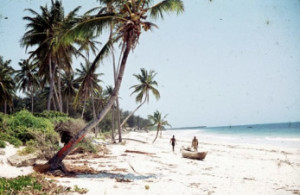
The beach was nice and the sun helped me recuperate after all the exercise of pushing a VW to the beach.
We were in Mombasa for a fortnight during which time we change our Indian crew to a full African crew. We now had to learn Swahili. Chilka was the first British ship to carry a full compliment of African crew. We managed to make the newspapers and the Mombasa Times ran a major story with photographs.
Our new steward was younger than our Goanese steward so we were unsure of the correct procedure.
The Goanese steward was known as a ‘Boy’ although he was older than all of the cadets. One would shout ‘Boy!’, and things happened. The title of ‘Boy’ was not a derogatory title, because all of the cadets respected him, and the work that he performed – it was a carry over from earlier times. We were always polite to the cabin staff, using ‘please’ and ‘thank you’ and we made a point of asking after his health and the health of his family. We got to know of children, their schooling etc through our steward’s letters from home. Times have changed and I doubt that the use of ‘Boy’ would be acceptable today.
So for our new African steward we had to find out the equivalent; was ‘Boy’ still acceptable? In the end we used his name, which he anglicised to make it easier for us to pronounce. With his help we started to learn Swahili, and found out that he spoke about five different languages, or enough of a language to get by, which included fluent English & French, and being able to be understood in various African languages and Turkish!
He’d been at sea for a number of years and had picked up ‘European’ languages during his time sailing in various European vessels. We were not surprised that he could speak English as Kenya had not long been independent from Britain (just over a year earlier in December ’63), and English would have been the de facto language in local schools.
The one problem with the African crew was that most of them did not have any concept of a European winter. They had sailed ‘deep sea’ from Mombasa, but mainly to neighbouring countries, to India or the Persian Gulf. So when we mentioned to some of the crew that they should consider something better than open toed sandals for a UK winter, they grinned with their large sparkling white teeth, as if they knew best.
Our new steward was aware of the winter cold, and he had planned for such, but he told us that the deck crew would have to find out for themselves, because they would not listen to either him or us.
When they did arrive in London the deck crew had a grey pallor due to the cold, and they had so many layers of clothing on that they could hardly move. During their free time they spent most of it in the cinema, because it was cheap and they could at least keep warm.
After leaving Mombasa our next stop was Dar es Salaam in Tanganyika, which had become independent in 1961. It was a very short trip, a matter of hours.
Tanganyika used to be under Britain, until the UN took it over as a Trust Territory. The city of Dar es Salaam still had that British feel, but I never felt as comfortable as I did in Mombasa.
Tanganyika had only months earlier joined with the island of Zanzibar, to create a new country called Tanzania, but at that time people still referred to it as Tanganyika. The economy of the place was not as strong as Kenya, and it showed.
Our time in Dar es Salaam was about three days. Not long enough to see much, because we had to work each day, but the town was a lot quieter than Mombasa. While at anchor waiting for our turn to move alongside, the cadets decided to go for a sail. It was a quiet afternoon, very hot and sultry, and everyone with any sense was sitting in the cool of his cabin, or the small ship’s bar.
We were not working cargo so it was the perfect day to take out the ship’s sailing dinghy, and perhaps have a swim. We had been looking forward to this day in Dar es Salaam harbour for some time.
The dinghy was unlashed and a rope was attached to the bow and sternpost, and we then hooked the centre of the rope to the cargo hook of one of the ship’s derricks. We could all drive the steam winches that moved the derricks, so it wasn’t long before the dinghy was swung out and lowered in to the harbour, where it immediately filled with water. We’d checked the bung, and made sure that it was in place, so that was not the problem. It was then that we remembered the dinghy had not been used for a long time, and the wooden hull had dried out. With wooden boats it can be helpful if they are kept partly filled with water, when not in use. This will stop the hull drying out and leaking when next placed in the water. We’d failed to keep the sailing dinghy in a sea worthy condition.
Not wishing to draw attention to our failure, particularly the attention of the Captain, we reversed the lowering and started to lift the boat back up to deck level. We planned to bail the water out, and try and fix the leaking problem.
This was another mistake – as the dinghy, still full of water, lifted from the sea, it was too heavy for the attached shackles, which secured the dinghy’s fore and aft posts. Suddenly the shackles ripped the wooden bow and sternposts from the dinghy, which then fell apart as it released all the water. We were now left with a bow and sternpost hanging from our derrick, and a partly submerged dinghy floating away across the harbour.
We quickly hauled up our broken pieces of boat, and re-stowed the derrick to its proper place. The rope was stowed, the shackles replaced in the bosun’s store, and the bow and sternposts returned to the deep. We all made our way quietly to our cabins and sat ‘studying’ until we were called for stations to go alongside. If anyone noticed that the dinghy was missing it was never mentioned. Perhaps the First Mate was happy to see the back of it, considering that it was cluttering up his nice deck area. From Dar es Salaam we sailed for Tanga, which is a seaport on the northern tip of Tanzania, very close to the border with Kenya. Tanga, famous for its sisal means ‘farm or cultivated land’ and gave its name to Tanganyika, which means ‘Sisal farm’.
Being in the ‘sisal farm’ we loaded sisal, after discharging stone, heavy machinery and frozen food, including more ice cream.
Two days was enough for Tanga after which we sailed for Zanzibar, a favourite place for the slavers of old, and of course Bob Hope, Bing Crosby and Dorothy Lamour.
The Anglican Christ Church cathedral in Stone Town, Zanzibar stands on the old slave-trading market site. In 1822 the British signed a treaty with the Sultan of Zanzibar to end slavery, but it took until 1876 before this trade came to an end. Of course the trade carried on to a lessor degree by kidnapping children and selling them to ‘customers’ in the Persian Gulf. Slaves escaped to freedom as late as 1931.
David Livingstone (pictured) estimated in 1857, that 80,000 thousand slaves died on the way to the Zanzibar slave market, and of those that lived 50,000 were sold to Sheiks and rich traders in the Persian Gulf. This slave market had nothing to do with the West African slave trade to America, which the UK was outlawed in 1807.
The cathedral’s alter is supposed to be at the exact spot of the whipping post.
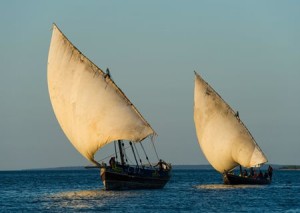
We loaded bag of cloves from sailing dhows and barges using our own gear and the local labour for stowing the bags, after which it was Dar es Salaam again, followed by Mtwara on the southern tip of Tanzania.
Mtwara was a created town in the 1940’s for the export of groundnuts (peanuts), but the enterprise failed and the idea was abandoned in 1951. The town had been created to house 200,000 people, but when I visited Mtwara it had a feeling of being forgotten, with few people walking the dark sandy streets. On leaving Mtwara it was back to Dar es Salaam, followed by Tanga, where I had an inoculation top up for cholera (another blunt needle). Not sure if it was the injection or the local beers, but I was not a happy chappy for a few days.
Our final East African visit was back to Mombasa where we anchored up the Mombasa Creek. The constant sound of insects and birds as we lay at anchored reminded me of the Edgar Wallace books that I’d read and the films that I’d seen. After a day and a half at anchor we moved alongside at the main port area, to load tea and coffee for the Sudan, and a present of flour from America for Aden.
After completing loading our East African adventure was over and we sailed for Europe via the Red Sea.
Five days later we arrived at Aden around mid-night; anchored, and immediately gangs of labour came aboard to unload the Aden cargo. They worked through the night and we sailed at lunchtime. One of the fastest dry cargo turn around that I’d experienced, just twelve hours.
Two days later we arrived at Port Sudan to discharge the Mombasa tea and coffee along with empty soft drink crates – no idea why they wanted empty crates. Strange how odd things like empty drink crates, stick in ones mind from so long ago.
The export cargo from Sudan was Arabic gum (in bags with plenty of tiny insects), ivory (it wasn’t illegal at that time), and groundnuts. After five days we sailed for the Suez Canal.
At that time the coral reefs around Port Sudan harbour entrance were considered to be amongst the finest in the world. Even though I’d experienced a shark’s shadow on our first visit, I couldn’t resist another look at the reef, it was magnificent.
It was February, and as we drew closer and closer to the canal the temperature became noticeably cooler. A very pleasant temperature for the Europeans, who were still in tropical whites, which included shorts, but for the African crew they began to complain of being cold. The Company had arranged for a supply of warm weather clothing for the crew, and this was handed out.
The problem was that the clothing was of mixed sizes so some of the crew complained that they couldn’t move because their shirt was too tight, and others complained that their legs were cold because their trouser were too short. It became the cadets job to reclaim all the clothing and to make sure each crew member was kitted out with clothes that fitted, as best we could. This put a stop to fights over pieces of clothing. As we passed through the Canal I received a letter from Head office that I was to go on leave once we arrived in the UK, and they gave me the name of my next ship, which was to be Dunera, a school ship.
Once in the Mediterranean all the crew appeared to put on weight – in fact they refused to take off any of their clothing, because they were so cold and began to look like a gang of Michelin men.
It took us a week from Port Sudan to Gibraltar, during which time the temperature had dropped from around 27 c (80F) to a cool 12 c (53F) and the crew were suffering.
We only stayed in Gib just long enough to discharge 71 boxes – can’t remember what was in them, but I do remember it being my first visit to Gib and it was very short – about three hours.
Next port was Hull in the UK and we had to transit the Bay of Biscay in winter – not a pleasant experience with heavy Atlantic swell causing us to pitch, roll and corkscrewing in a force eight.
The temperature kept dropping and by the time we reached the English Channel it was down to 6 c (42 F), the officers were now in ‘blues’ far too cold for shorts.
I paid off Chilka on a Sunday, while still at sea, with the grand sum of £20 in my pocket. I’d been away for about four months so I didn’t expect a long leave. We docked in Hull on Monday morning, and by the afternoon I was back in Birkenhead.
Thirteen days later I flew from London to Venice, via Milan, to join MV Dunera, which was along side St Mark’s Square. I doubt today’s vessels would get anywhere near St Mark’s Square.
Dunera was a troop ship for the British Government, having been launched in 1937. She trooped to the Middle East, South Africa, Singapore and Australia between 1939 and 1941. In 1942 she took part in the Madagascar landings during Operation Ironbark. During this operation my father was involved in the landings as a sailor aboard another Company troop ship named Karanja. It was only many years later that I found out about this long link of ‘six degrees of separation’. Dunera was also the headquarter vessel for the US 7th Army during the invasion of Southern France in 1944.
In 1961/2 the British Government decided to suspend all sea going trooping and only to use air, which left a number of troop ships unemployed.
BI had experienced school ships in the 1930’s, so they thought that they could reintroduce the concept in the early 60’s and convert troop ships to becoming ‘school ships’ – ships that specialised in taking school children on educational cruises. In its first year as a school ship Dunera carried over 10,000 school children around Europe to famous historical sites. She could carry 194 first class passengers, in various cabin configurations, and 834 school children in dormitories.
The students received lectures by well-known academics, as well as their own teachers, on the places that they would visit. It was a true ‘school’, but very different from a classroom at home.
I enjoyed my time in Dunera, because each time we visited a new port coaches and guides would be available for the students, and on many occasions the cadets were allowed to join their tours. I was exposed to a huge amount of history, which I loved.
Life as a cadet was educational for me as well as the students. As cadets our duties ranged from ferrying passengers (regardless of age) ashore in motorised lifeboats. Helping the entertainment staff in the daytime and early evenings to keep the students amused (they were in bed by 9.00 pm).
During sea days we would have ‘fun fairs’, and part of our job was helping to rig the stalls and take part in operating a coconut shy, water bombs to knock one of the ship’s officers off a chair in to a bath, fancy dress competitions, horse racing, treasure hunts and later evening dances. During the dances we were in full evening rig, and we were expected to dance with as many girls as we could. It was frowned upon if we danced too many times with the same girl.
At certain times we would be anchored for some time and the lifeboats would be lowered and ‘manned’ by the students. We cadets dressed in whatever rig we fancied – I used to be dressed as a pirate – and we would command a lifeboat each and race around the Dunera. The lifeboats were not the motorised boats, but Fleming geared lifeboats which required the passengers to move a handle, which was in front of each seat, back and forth, which would drive the propeller shaft and the propeller. The boat was usually packed with students and they would double up on the handle so that we could go faster. The race around Dunera was always very popular and generated dormitory competition and ‘loyalty’.
On one particular cruise it was a Catholic school cruise with many young students – ten or eleven to fourteen years old and the teachers were nuns. The nuns used to take part in many of the games and also the boat race. I had three nuns in the bow of my boat and my ‘crew’ were finding it hard to move the boat fast enough with the ‘deadweight’ in the bow. As a pirate I used to carry a whip, which I could crack while shouting pirate slogans such as ‘Row you swabs! faster, faster!’ and other such niceties. The nuns, dressed in their black habit ‘uniform’ and a smaller version of the cornette, the traditional nun’s head gear, where enjoying the sail until I cracked my whip and shouted for them to ‘Row, sisters!’I was quite surprised when all three bowed and grabbed a handle and started jacking it backwards and forwards. We increased speed, but not enough to stop us coming in last.
Later I was called to see the Captain and ‘asked’ not to become too enthusiastic when shouting at the nuns, because they were also on their holiday. I could take a hint.
I was also required to give half hour talks about the happenings on the bridge to both first class passengers and students. This part of our duties was nerve racking until you had your patter down to a fine art. The same jokes always raised a laugh, the questions were nearly always the same, and it was enjoyable being able to speak to so many people from all walks of life. These ‘talk days’ would start around 9.30 am and finish around 4.00 pm with a short break for lunch. Each group of passengers could not be too large in case they interfered with the operation of the bridge, so with seven to eight hundred students and two hundred first class passengers visits were constant.
One of the most asked question was how we found our way round the world. At that time we didn’t have computers, satellite communications and we definitely didn’t have Satnav or GPS. We used our eyes and took bearings of prominent points of land. We did have primitive RADAR – compared to today’s RADAR, and an echo sounder, and a lead line for obtaining how deep the water was close to the land. At times we used the echo sounder and then cross checked with the lead line!
At the Dunera’s stern we had a log line, which was a spinning bronze unit just under the water. The unit was attached by a rope to a reader on the ship and this gave us our speed through the water.
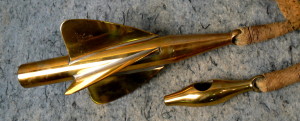
The large piece, shown in the picture, is under water and the smaller piece is attached to an instrument on the ship.
When I was asked by an elderly lady how we found our way home I asked if she had seen the spinning rope astern – she had, but obviously didn’t remember the details of its use. So I told her it was attached to the wharf at Southampton and when we wanted to go home we just wound it back in until we reached Southampton.
What I didn’t know was that this lady was on the Captain’s table for her evening meals, and told the Captain how fascinating it was how we found our way home!
The following day I had another chat with the Captain! At least he smiled when he asked me to stop teasing the passengers.
The dormitories were male or female and we had security staff that patrolled the ship at night. The head of security was called Master at Arms, and he wouldn’t stand for any messing about from the students, particularly the male students who were trying to visit the female dormitories.
The students ranged from eleven years to late teens to early twenties.
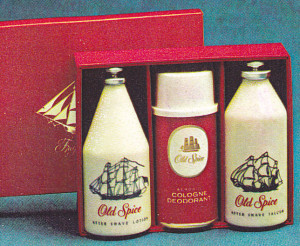 I did sail with a Swiss school cruise where most of the students were older than me. The Swiss cruise sticks in my mind because the girls bought all the Old Spice after shave from the ship’s shop thinking it was perfume. For me it was very disconcerting to dance with an attractive girl smelling of after shave. I had to remember to use a different brand for myself, just in case she thought I was using ‘perfume’.
I did sail with a Swiss school cruise where most of the students were older than me. The Swiss cruise sticks in my mind because the girls bought all the Old Spice after shave from the ship’s shop thinking it was perfume. For me it was very disconcerting to dance with an attractive girl smelling of after shave. I had to remember to use a different brand for myself, just in case she thought I was using ‘perfume’.
After sailing from Venice we visited Corfu in Greece, which didn’t have the facility for us to go alongside so the cadets had their hands full ferrying passengers ashore in motorised lifeboats. It took from 9.30 am to 11.00 am to get everyone who wanted to visit Corfu, ashore. There was a small wharf where we were able to disembark our passengers.
At 3.00 pm we started all over again to pick the passengers up from the shore and return them to the ship. Having experienced small boat handling at Conway I enjoyed the time that I was in ‘command’ of my very own ferry boat.
Next port of call was Istanbul, and here we went alongside.
Once again I and my fellow cadets joined the excursion ashore to see the sites of Istanbul.
We visited St Sophia’s – the first church on this site was built in 360 AD, the second church was in 415 AD, the third church was opened in 537 AD and remained a church until 1453 when Constantinople (Istanbul) fell to the 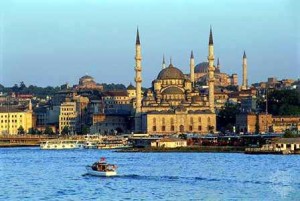 Ottomans and St Sophia’s became a mosque. In 1935, thanks to Kemul Ataturk the founder of the Republic of Turkey, the building became a museum. St Sophia might be better remembered by many people, because it was used in the making of the James Bond movie ‘From Russia with Love’.
Ottomans and St Sophia’s became a mosque. In 1935, thanks to Kemul Ataturk the founder of the Republic of Turkey, the building became a museum. St Sophia might be better remembered by many people, because it was used in the making of the James Bond movie ‘From Russia with Love’.
We also visited the Blue Mosque, which is not blue on the outside, but due to the 20,000 blue tiles inside the Mosque
Beside the historic sites of old Istanbul the one thing that does stick in my mind about my visit to Istanbul was that I nearly sold one of our passengers.
The coach party that I had joined was given free time to enjoy whatever we liked as along as we were back at the coach meeting place at a certain time. We were warned not to wander off on our own, but to stick together in little groups. Angela, one of the girls on the coach had taken a shine to me (it must have been the uniform) and she had made sure that she was in my small group. I asked what they wanted to do and Angela, who was eighteen or nineteen, wanted to see the Grand Bazaar, but she was reluctant to go on her own. The coach party had already visited the bazaar, but my small group consisting of myself, another cadet, three girls, and a male student, wanted to return to purchase souvenirs, and they wanted me and the other cadet to keep them company, because at twenty, and having seen us in uniform, we must have appeared quite old.
The bazaar was crowded – as it nearly always is – so one had to be careful with wallets, bags and strange characters.
The girls found the leather area, and started to try on various jackets and to chat to the stall holders. While at one of the stalls, a middle aged man came up and started to squeeze Angela around her waist and upper arms as if he was checking a piece of meat. I moved forward and told him to stop what he was doing, at which point he asked me how much. It dawned on me that he wanted to buy her! I thought he was joking and not wishing to start a scene, and thinking that he would leave if I stated a high price. He looked at the girl for about a minute and suddenly agreed!
At this point I stated that it was a joke and called the stall holder to help translate. He spoke to the ‘buyer’ sharply in Turkish and pushed him away with much waving of arms. Fortunately Angela thought the whole episode was a great joke, but I think she was glad that she was part of a group, and not on her own.
As foot note to the story – some weeks later, after Angela had flown home from Venice, we docked in Southampton and in the mail waiting for me I received an invitation from her to a birthday party at her parents’s home. Her family lived on a converted MTB on the Avon River in Christchurch.
There were a number of converted MTB boats due to the lack of housing in the area. The picture illustrates the MTB after being converted, but it was not the boat that I visited. I arrived on board and was introduced by Angela to her father. As we shook hands he said to me – ‘I believe that you tried to sell my daughter in Istanbul?’
At this point I was hoping the floor would open and I would sink in to oblivion. I tried to apologise and say how sorry I was for making a very poor joke at Angela’s expense. At the end of my babbling he leaned forward and whispered in my ear – ‘The next time you try and sell my daughter, take her mother as well!’ I was lost for words as I tried to look shocked, at the same time I could not stop the laughter.
We planned to sail from Istanbul in the early evening. Lines ashore were singled up, the pilot was aboard, and the order was given to raise the anchor. We had dropped it during the manoeuver of going along side. If the wind had strengthen it might have inhibited our efforts to leave the wharf, so by hauling on the anchor this would assist us to move clear of the wharf, regardless of the wind’s effort to keep us alongside.
The clank, clank, of the links being hauled through the haws pipe could be heard on the bridge as I updated the log book.
Suddenly we heard shouts and two strikes on the forecastle bell indicating a light on the port side. The Captain moved quickly to the port wing of the bridge, followed by the officer of the watch and the pilot. I picked up my log book and stood just inside the door of the bridge on the port wing. I could see a very large well lit vessel getting closer and closer. One glance was enough, it was a floating restaurant, heading towards us, but the problem being that the restaurant didn’t have power.
What had happened was that our anchor had fouled the restaurant’s under water moorings, and we were dragging the restaurant towards us by raising our anchor. It took some time for us to leave the wharf and sail very slowly towards the restaurant paying out our cable to allow the restaurant to easy back to her normal mooring position. Once our anchor cable was vertical it was easier to gently haul in our cable link by link. Fortunately we were able to raise our anchor as well.
From Istanbul we sailed for Itea, which at the time was a very beautiful sleepy location. In 1991 the population was 4300 people so you can imagine how many people lived there in 1965 – if any! Once again we ferried people ashore.
The following day we arrived at Naples, the port for Pompeii. A very interesting day and far less crowds than I experienced in 2015 !
From Naples it was Sardinia, Cagliari. It was Palm Sunday and the place was very, very quiet. I decide to go for a swim on Poetto beach, which was a beautiful beach of fine white sand backed by white sandhills. I wonder if anyone else remembers this beach in 1965? Due to the removal of the cassoti (beach huts) in the 1980’s from the beach, and the failure to stop sand erosion, the beach had to be rebuilt using sand from dredgers. The problem was that the new sand was not the fine white sand of old, but different coloured sand. I believe they are having the same erosion problems today and the ‘new’ sand is being washed away.
After my swim I felt peckish and decided to buy a ham roll to eat as I walked back to the wharf to re-join the ship. One bite and I realised it was not ham, but prosciutto. At that time I had not yet come to appreciate this type of dry-cured meat. While walking along the street I had been adopted by a dog that wouldn’t leave me alone, so I thought why not give him the meat? It’d save it going to waste, because I didn’t like the taste. The dog sniffed it and refused to eat any of the meat; he looked at me and trotted back towards the beach. Obviously the dog and I had the same tastes.
I arrived back on board to find a pile of letters and cards waiting for me – I’d forgotten it was my 21st birthday.
We sailed at 11.30 pm and three days later we sighted Gibraltar. This time I was going to make an effort to get ashore.
I did manage to get ashore and had a look around the Rock. Would have liked longer, but we sailed at midnight.
Two days later we arrived at Vigo after a rolling trip from the Atlantic waves. The ship’s movement kept most of the younger students very quiet. We were only in Vigo for a short while, but I managed to miss the bus back to the ship and had to fork out for a taxi.
From Vigo, the next stop was Southampton and the chat yet to happen, with a certain father in Christchurch. We were alongside in Southampton just long enough to say goodbye to many new friends – many in tears, and to welcome a new batch of students. We sailed at 3.00 pm the day after we arrived.
This voyage was Vigo, again, and later Cadiz, ‘Singeing the beard of the King of Spain’ according to Sir Francis Drake. We didn’t singe anything except ourselves on the beach.
Next day it was Lisbon at 6.30 pm, a great time to arrive, because we will have time to see the night life without having to chaperone any of the passengers. Eventually we found our way to the Texas Bar, which was a long narrow room with a bar on the right as one entered. Tables were scattered around and a small band played in what looked like the front half of a large rowing boat. Nothing strange in seeing bands in various gimmicky settings, but the ‘boat’ was half way up the wall, in the far corner of the room.
As the evening progressed the place filled and the noise level increased. The band had to play louder and louder. The band also played requests, via the patrons passing notes with the music title written down, and the note accompanied by folding money. It always happens – the band played the wrong song, and someone took ‘umbrage’ and tried to stand on a table to get at the boat in which the band was playing. It was then that I saw barbwire wrapped around the side of the boat. Until it was pointed out to me it just looked part of the boat’s decoration to give it authenticity, as in fishing lines. The music critic couldn’t quite reach the boat, so he was saved from receiving some very nasty cuts. I asked a waiter if this was normal and he told me that they had to introduce the barbwire some weeks earlier to protect the band!
A tired memory fifty years later, but I have read that it still opens at 11.00 pm each day, but I don’t know if that is true or not. The name can be read in the picture on the left.
We sailed the following evening, the cruise was nearly over – three and a half days and we will be in Tilbury. During the homeward trip we arranged tug of war between the students and the first class passengers. The students won and later all the officers attended a show put on by the students. It was a good show and part of the show was a sketch with two cadets – both caricatures of myself and another cadet, because we had the most to do with the students. It went down very well with the other officers and I even recognised some of my own foibles. Do I really walk like that??
It was soon Tilbury Docks and homeward bound for our latest school cruise.
Next day we sailed for Edinburgh in the Firth of Forth in Scotland, for a cruise of Scottish students. This time we sailed for the Baltic area and our first port of call was Kristiansand on the southern tip of Norway. I did miss the heat of the Mediterranean, even in May the outside temperature at night was cold. We arrived at 8.00 am and held a regatta for the students – think pirates again, but this time without the nuns.
At noon we sailed for Copenhagen, arriving at 8.00 am the following day.
I loved our visit to Copenhagen. The Tivoli Gardens was a ‘must’, over twenty acres of not just gardens, but also a giant fun fair and amusement park. It was opened in 1843 is still going strong. We would have liked to stay longer but the tour moved on to the Little Mermaid. I was a little disappointed with the position of the mermaid because I thought she would be in a park with great views across the water. It was difficult to take pictures of the statue without having the backdrop of cranes, warehouses and shipping industry.
1965 & 2014
– the statue is very close to the shore and as long you want a close-up you can miss out the background of industry.
I cannot remember the name of the small church that we visited, but the memory of the sailing ships hanging from the church’s ceiling has stuck with me over the years. I read that we call the main part of a church a nave, from the Latin navis, which means ship, and this has passed to us as navy or naval. A Christian life is a journey with our Pilot (Jesus) helping us to navigate through life. The Danes have linked the sea and ships to Christ in a much stronger way than many other Christian countries and the hanging of ships in various churches brings this home. The world council of churches uses a boat afloat on the sea of the world, with the mast in the form of a cross as their symbol.
From the colourful Copenhagen houses, some with cannon balls still embedded in their walls from the battle of Copenhagen during the Napoleonic wars, we sailed to Gdansk in Poland.
I found Gdansk in 1965 to be a very dour place giving off an impression of grey dull architecture and the feeling of a black and white photograph with little, if any, colour; so different from Copenhagen.
The Second World War was still a living memory for the Polish people, followed by Russian style communism, so staying alive, and keeping out of trouble was upper most in their minds rather than prettying up their buildings and streets. At that time it was a gaol sentence for anyone who wrote a negative article about the government.
Once again we cadets took part in the shore excursion, but we were really looking forward to the evening as we had plans.
In the evening I and some of the ship’s officers, who had visited Gdansk previously, took the opportunity of visiting a ‘night club’ called ‘George’s Place’. To us, the name didn’t seem to be all that exotic. The club was in the basement of a warehouse / old style building. We walked along a very quiet, dimly lit street, which had a badly broken pavement, until we reached the entrance of George’s Place with its grey concrete steps leading up to a green double door in a wall of chipped red brick which appeared to have been there since the late 1800’s. After knocking we were let in and followed the doorman down a steep wooden stairway to the club. The club was more restaurant than ‘night club’, with just a very small dance floor and a quartet of musicians playing American style music. We had our meal and where sitting around chatting to some local girls when one of the girls introduced us to a small group of Polish soldiers who were celebrating a birthday.
One of the soldiers stood and toasted us in vodka and black current juice. We had to return the toast, which was followed by a further toast to our Queen, Queen Elizabeth, and of course none of us knew who was in charge of Poland, so we toasted the Polish people, and the evening went on and on via toast after toast. One of the local girls that we met was named Helen who was very attractive and I took a shine to her. We danced and sang along with our new Polish friends and at the end of the evening Helen and I promised to write to each other.
Sometime later, when I was back in the UK, I received a letter from her asking why I never mentioned that I was in the Royal Navy Reserve, because she had received a visit from the Polish (Russian?) security services. This bothered me, because I hadn’t even mentioned that I was in the RNR to anybody on the ship, and the only person who would possibly know about my link with the RNR would be the Captain, and I doubt that he would have mentioned this to Helen.
I wrote back that being a member of the RNR was not a secret, and the subject never came up during our evening chat. I never heard from her again.
The following morning we sailed for Gothenburg and arrived forty eight hours later. At that time Gothenburg was a very quiet town and after the tour of the city with the students, three of us did our own tour, which was a giant flop.
The following morning we sailed for the Firth of Forth the cruise was over.
Thirty six hours later we embarked another full complement of students for a cruise of the Baltic. Our first port of call was Stockholm; what a beautiful interesting city. We arrived during the night, picked up our pilot and sailed quietly through the archipelago of the many islands that stretches 80 km offshore. By sacrificing some of my night’s sleep I was able to see, what I believe was the distant northerly lights of the Aurora Borealis. We hadn’t reached the man-made lights of Stockholm and the night was free of light pollution.
Dawn came up around 5.00 am, which ended any further chances of seeing the Northern Lights, but instead we had the city of Stockholm waking for a new day.
During the tour of the city we visited the Vasa. The Vasa was a sailing ship that had sunk in 1628 on her maiden voyage just 1400 yards in to her voyage. Her guns were removed in the 17th century and she was left to rot until she was found again in the late 1950’s. She was salvaged in 1961 and placed in a special building where the ship was sprayed with water containing a chemical to stop her rotting. When I saw her in 1965 we could walk around the outside of the vessel on a special suspended catwalk.
The image of the ship has stuck with me over the years and one of these days I must try and return to see the finished product. We stayed overnight is Stockholm and sailed the following evening for Leningrad.
On arrival in Leningrad (now called St Petersburg again) at 6.00 am, we were greeted by hundreds of school students, dressed in gym wear, running around a large area alongside our berth. We were not in the cargo area of the port, nor where we in a cruise area, so I assume that because we were carrying so many students we berthed at a special wharf to maximise the propaganda aspect of our arrival. We felt sorry for the gymnasts because it was quite cold at 6.00 am, even in May.
The athletic exhibition carried on for about an hour, after which the athletes left the area in a disciplined manner. I think most of our students had left the viewing deck to find their breakfast after about twenty minutes of watching the gymnasts, partly because of hunger and partly because of the cold.
USSR 1965
Russia 2015
Above is the flag of the USSR in 1965, and on the right the flag of Russia 2015.
Later in the morning a fleet of coaches arrived to take our students and the cadets on an educational visit around Leningrad.
As the students disembarked I noticed that many had bulging pockets, but thought nothing of this as they were ‘children’ around thirteen or fourteen and many kids carried junk in their pockets. It was only later that I found out that some of the Scottish students had already completed a cruise a year earlier, and had visited Leningrad. This time they had come prepared with their pockets full of ball point pens, Biros we used to call them, which they sold to local Russians for a very fat profit. I don’t know if they received rubles or dollars for the pens. Others had common cheap items, pencils, rubbers (erasers if you are from the US), bought cheaply from the likes of Woolworths in Scotland. I had a lot to learn from these Scottish ‘students’.
I went ashore for the tour and of course we all visited the Winter Palace, which was a fascinating place and the Russian guide was able to bring the whole tour to life. She did such a good job I wondered if she really was a communist.
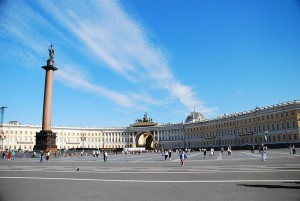 The Palace Square of the Winter Palace.
The Palace Square of the Winter Palace.
After we left the Palace we made our way along the river bank to the next bridge called Troitskiy Bridge near Liteyny Avenue. The bus stopped and we exited the coach to hear more about the sites of Leningrad. Towards the end of her talk I asked if there was a toilet nearby and the guide waved her hand in the general direction of Liteyny Avenue. I crossed the road and looked for the international signs of a gent’s toilet. Not seeing one I entered what I thought was a commercial building thinking that the toilet would be on the ground floor. The existence of guards on the door was not unusual, so I just walked in as if I knew where I was going. I found the toilet and entered the gents and stood on the high step near the urinal and then noticed that due to the low separation wall and the high step all the men could see in to the ladies toilets, which was a little disconcerting as many were occupied.
As I came out of the gents I was grabbed by two security guards and frog marched to the door and thrown out, with what I assumed was great deal of abuse in Russian.
On returning to the coach I commented to our guide on my experience and she went white. She immediately made sure all her passengers were on board and ordered the driver to drive quickly out of the area. It appears that I had wandered in to the ‘Big House’, which was a euphemism for the KGB building in Leningrad! I have my doubts that it was the KGB Big House, but after she told me what she thought, I was still glad that the bus was speeding away from the area.
The wide boys of Scotland must have passed on their entrepreneurial spirit to me, because I managed to swap a ball point pen for the red metal cap badge off one of the guards on the dock gates. I’d bought the ‘fur’ hat in Philadelphia when on the tanker (Ellenga) and I’d always wanted the red badge to attach it to the front of the American hat to create a ushanka (which means ‘ear hat’ in English) – now I had one! I still have the hat but have miss placed (lost) the badge.
The main difference between my hat and a real ushanka is that the ear muffs on my hat clip together, rather than being tied as per the Russian picture.
When I was at sea I carried three main ID documents – passport, discharge ‘book’, and a seaman’s card.
On arrival in China I used my ID card and not my passport, because I knew that the American authorities were not happy to allow anyone to visit the USA with an entry visa for communist China in the their passport. You’ll note that the card is red – how convenient.
Also, when in Russia I used my discharge book when disembarking in Leningrad, because the Chinese and the Americans didn’t like a Russian entry stamp in ones passport. The blue discharge book also has a place for my ‘Christian’ name, which is very un-PC in today’s world.
The pages in my discharge book shows Russian arrival and departure stamps.
I used my passport for going ashore in the US, which at that time the British didn’t require a visa.
We sailed at midnight for Copenhagen. I’m pleased that I saw a little of Leningrad, but can’t say I was unhappy to leave. Copenhagen was a huge difference to Leningrad with the multi-coloured buildings, Tivoli Gardens and an open and happy feel of the city.
Next stop was Grangemouth on the Firth of Forth in Scotland where I paid off the Dunera and caught a train to Falkirk, followed by another to Edinburgh, another to Preston and finally Liverpool and then the underground to my home. I left the ship at 7.30 am and it took me until 4.30 pm to reach home – today I can fly from Sydney to Kuala Lumpur in the same time.
I’d been released by the Company to attend Liverpool Technical College to study and to sit my Second Mates Foreign Going ticket. Now I’d find out if my shipboard studying had been any good.
How times have changed, because we were all adults taking the cramming course we were allowed to smoke in the lecture halls.
The course consisted of several papers – ship construction, navigation, chart work, seamanship, cargo stowage, ship stability, mathematics, English, plus an oral examination given by a real old sea captain who might have completed his time in sail. We had to pass a first aide course, firefighting course, radar course to name just a few.
It was late on a Friday afternoon when I had my oral exam. Not a good time considering that the examining captain might have been examining prospective candidates all week and could be tired.
During the exam I was checked for my knowledge of ship handling, flag recognition, ship stability, and Morse code, which I knew was my weak spot. I had a model Morse tapper at home and had practised using it, but I was not very good.
My hand was shaking so much that when I grasped the tapper in the exam I found it hard to tap out the actual letters and when I finished the examiner looked at me and said ‘ Whenever you are ready.’ I thought I’d finished, but he’d not been looking at the light to read the message! Eventually he stopped my examination and told me to go home and practise my Morse code, and to come back on Monday. If he failed me I would have to go back to sea as a cadet for a minimum of three months, on cadet’s wages. I was not happy!
The weekend was spent banging out Morse messages, and on Monday I showed up bright and early. As I walked in the examination room he showed me an array of flags and asked for their meaning. Flags I loved, and knew them all – he then asked a few other questions and told me that I’d passed. I looked blank, and he asked ‘How was your weekend’, and in the same breath stated that he bet I spent the whole weekend practising Morse. I agreed that I did, and as he shook my hand he said ‘Thought you would’ and smiled.
There is an old story of one cadet at his orals examination who was told to imagine that he’d lost power and his ship was closing on a rocky shore.
He said he’d drop his starboard anchor.
The examiner said that the wind was so strong that he was dragging his anchor – what would you do?
The cadet dropped his port anchor.
The wind and storm was still driving him ashore.
In the end the cadet dropped seven anchors, at which time the examiner asked where he was getting all his anchors.
The cadet replied – the same place you are getting your wind.
He was sent back to sea for three months.
I managed to spin the whole study time out so much that I had Christmas at home. Besides passing my second mates ticket, I also met my future wife Maureen, which was another reason that I managed to spin the time out to have Christmas at home.


